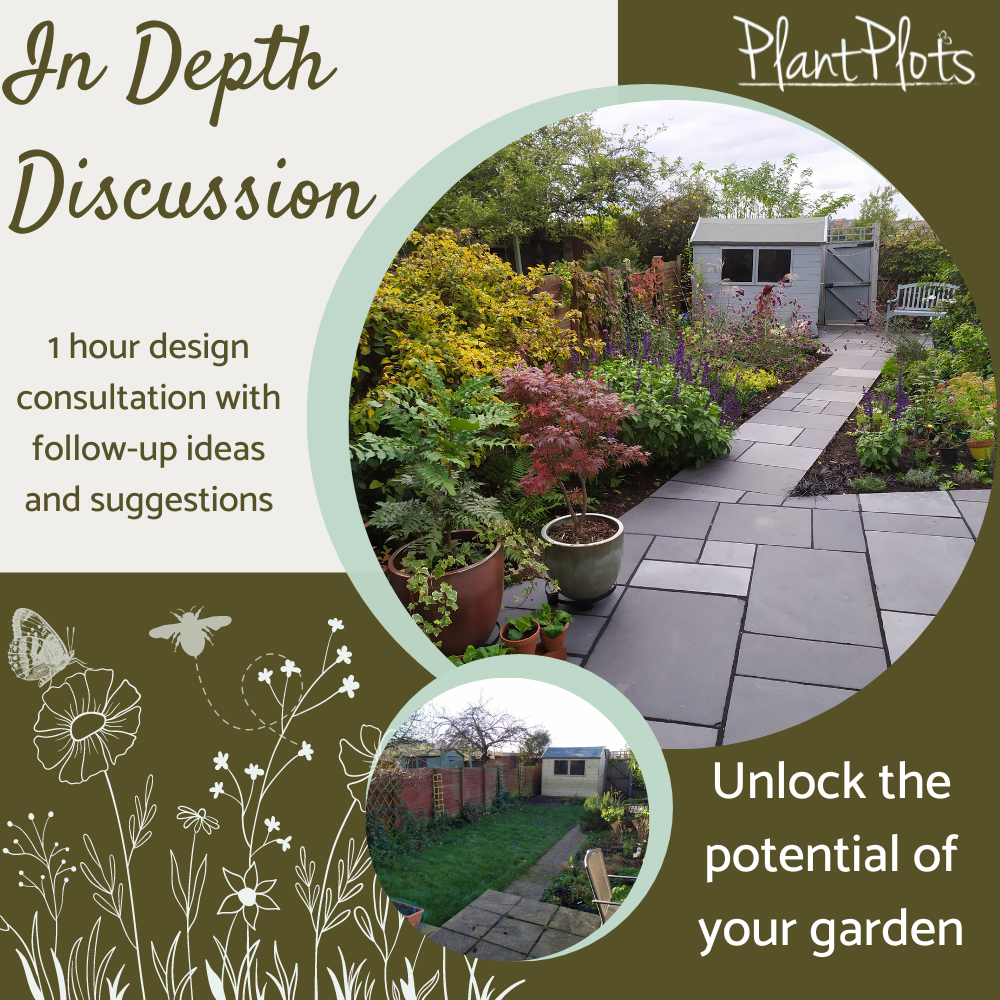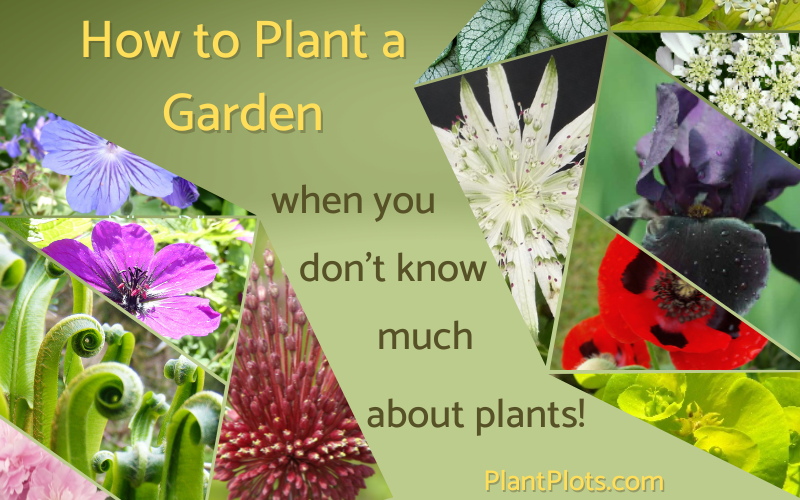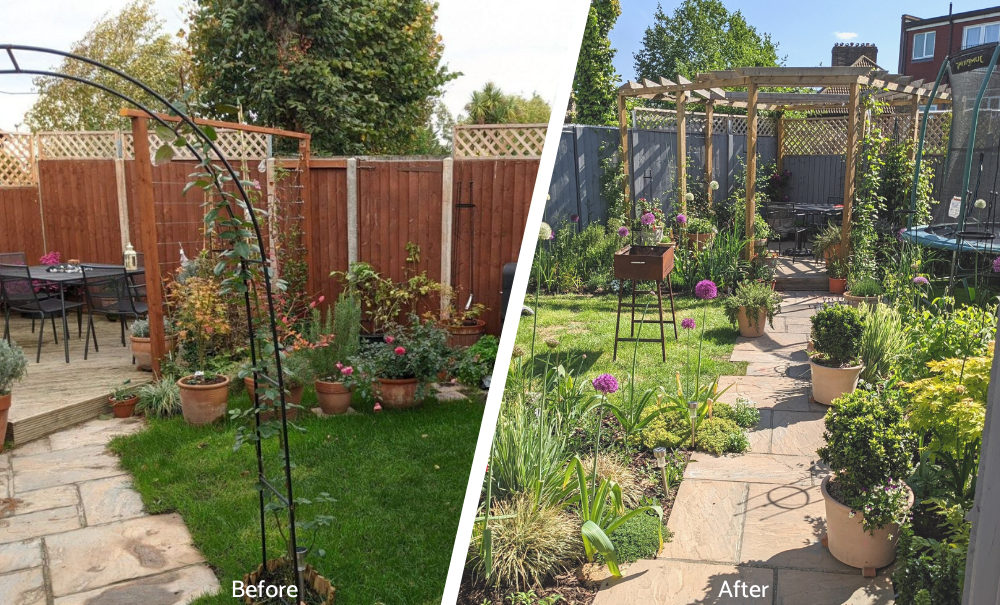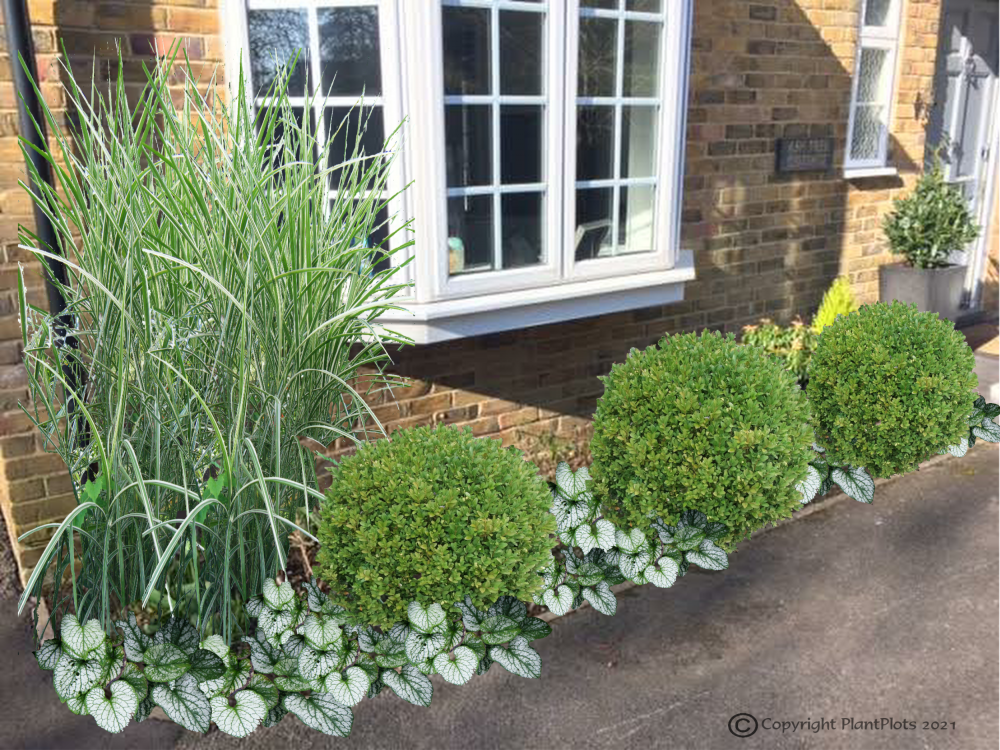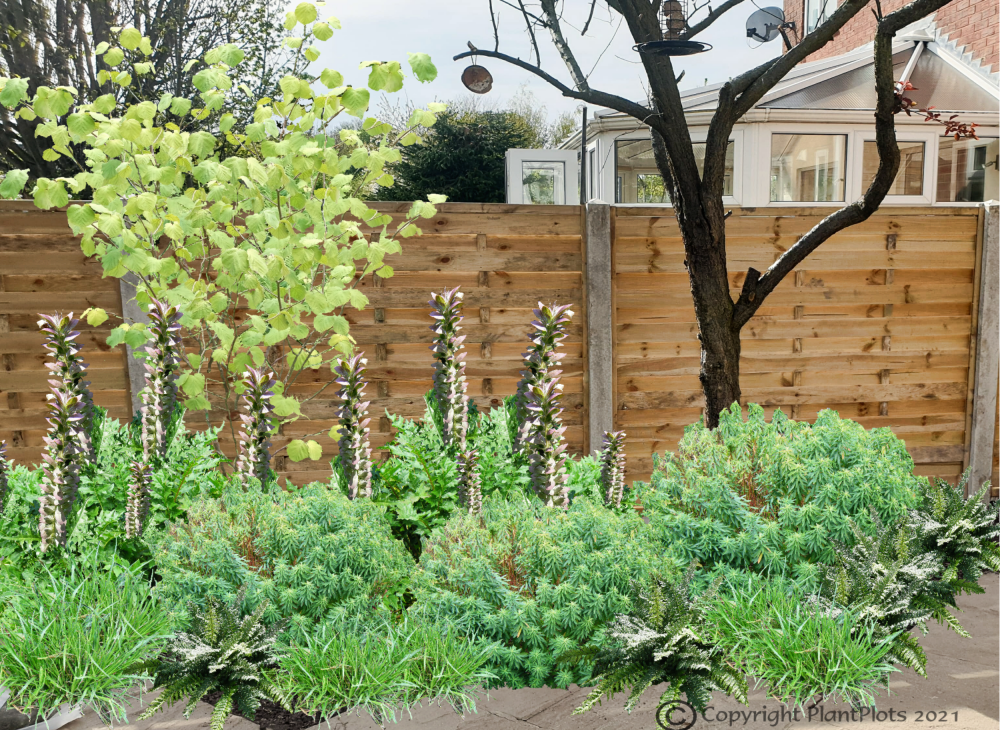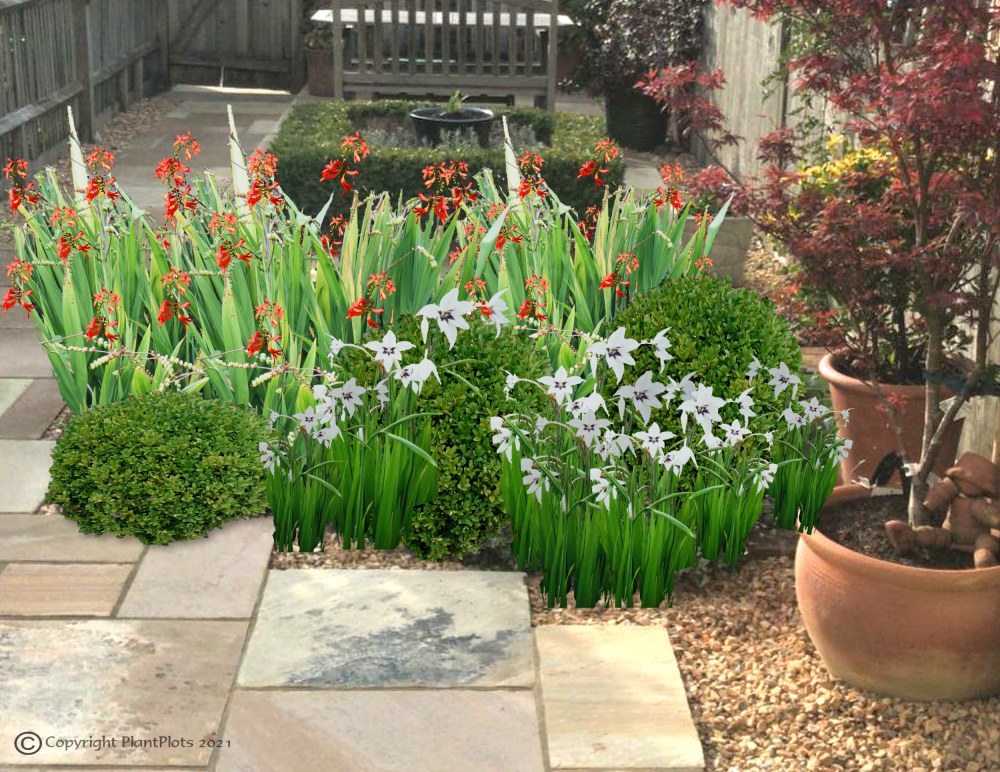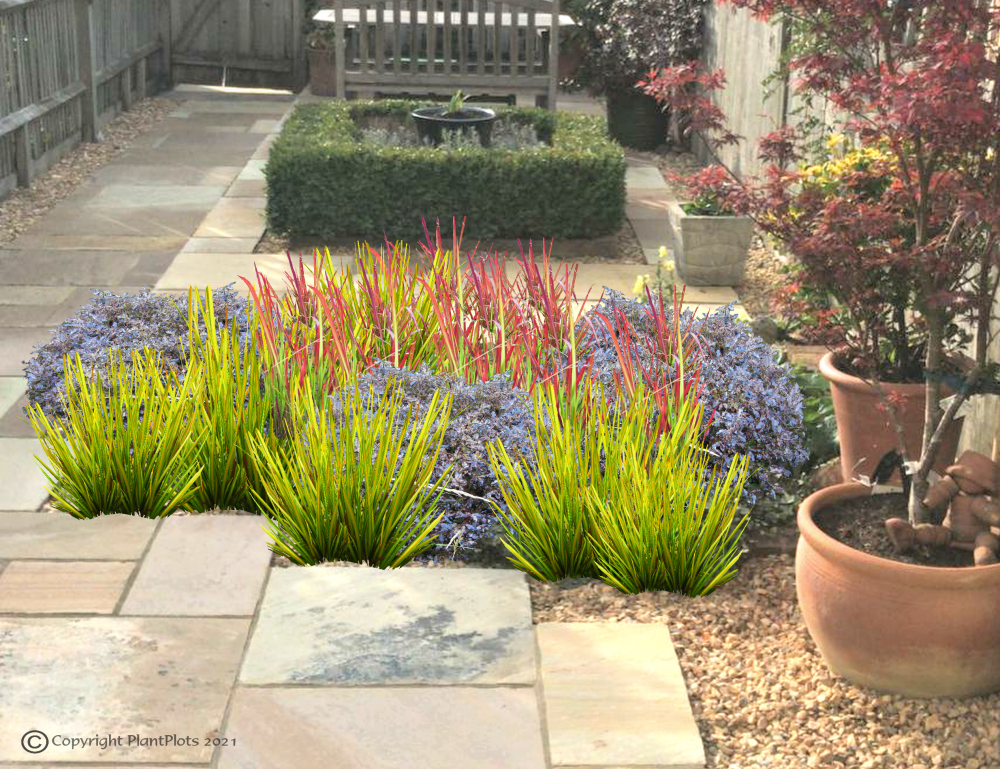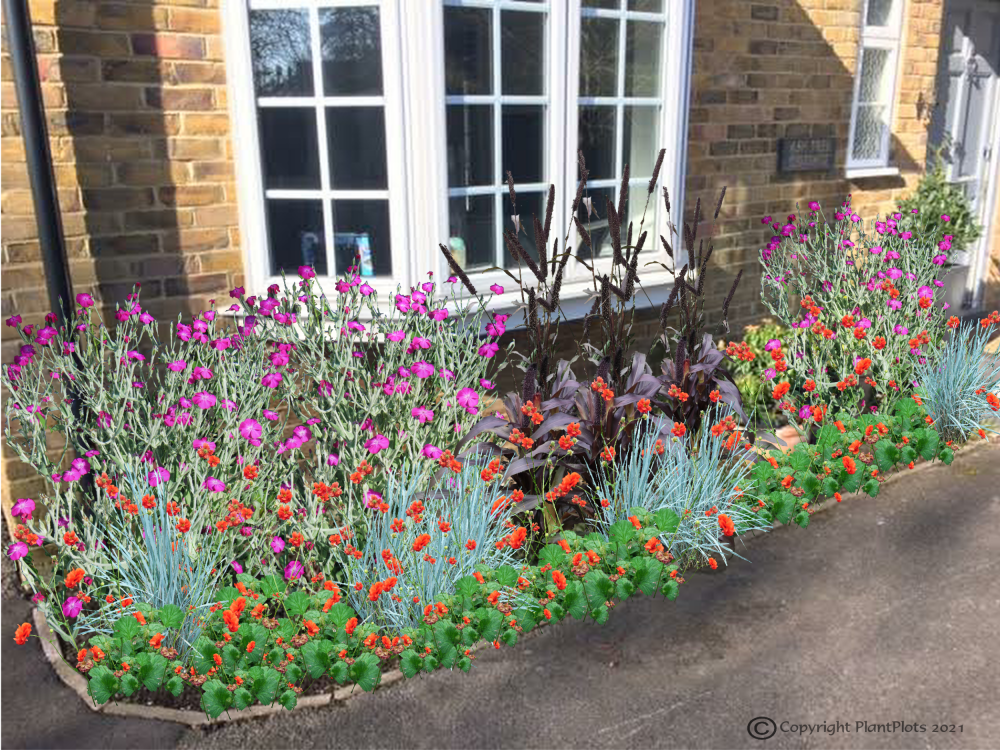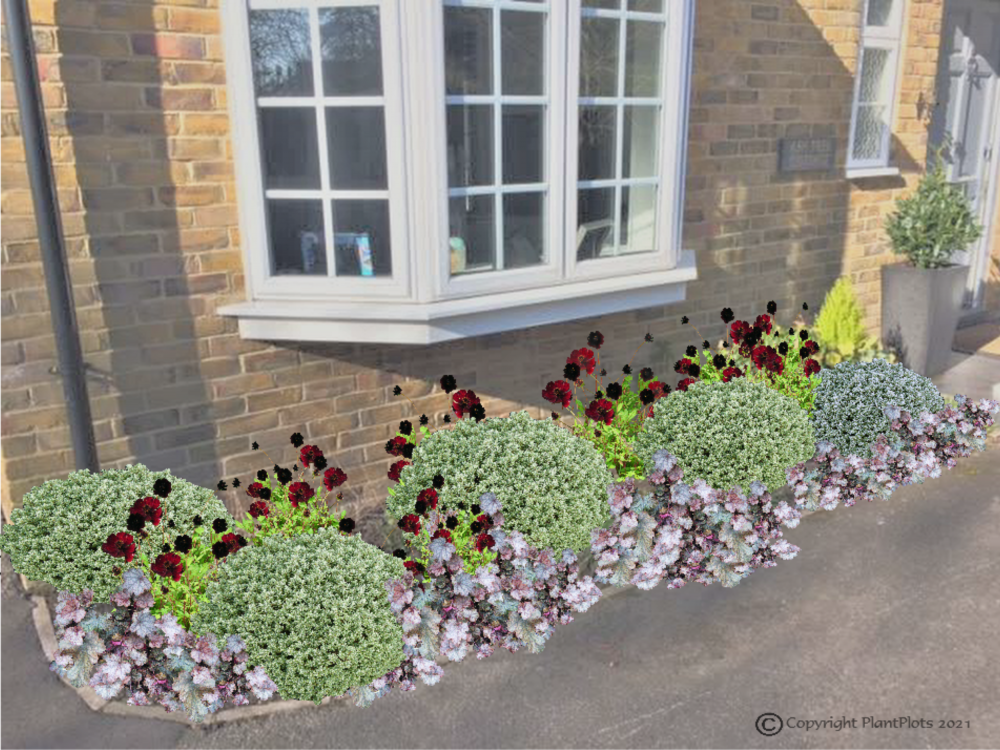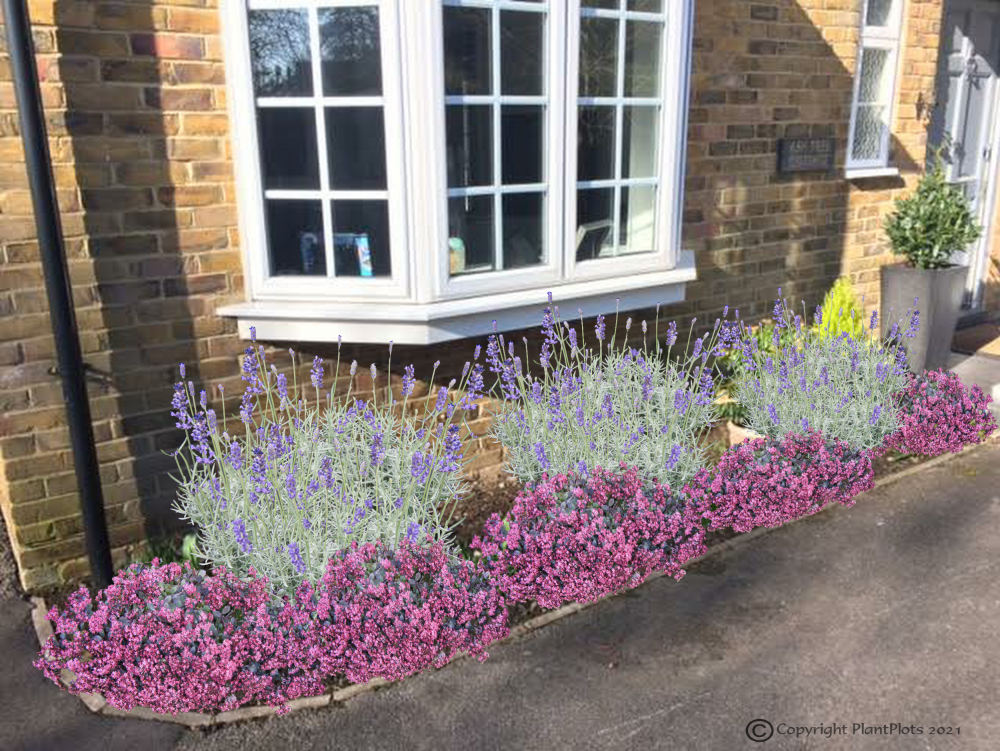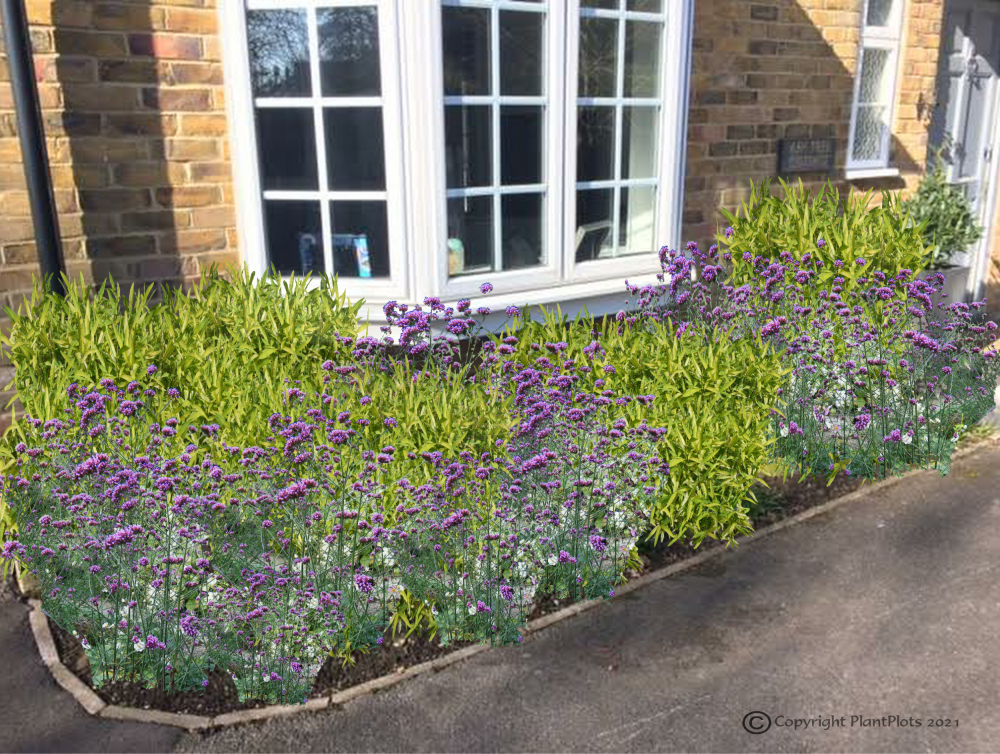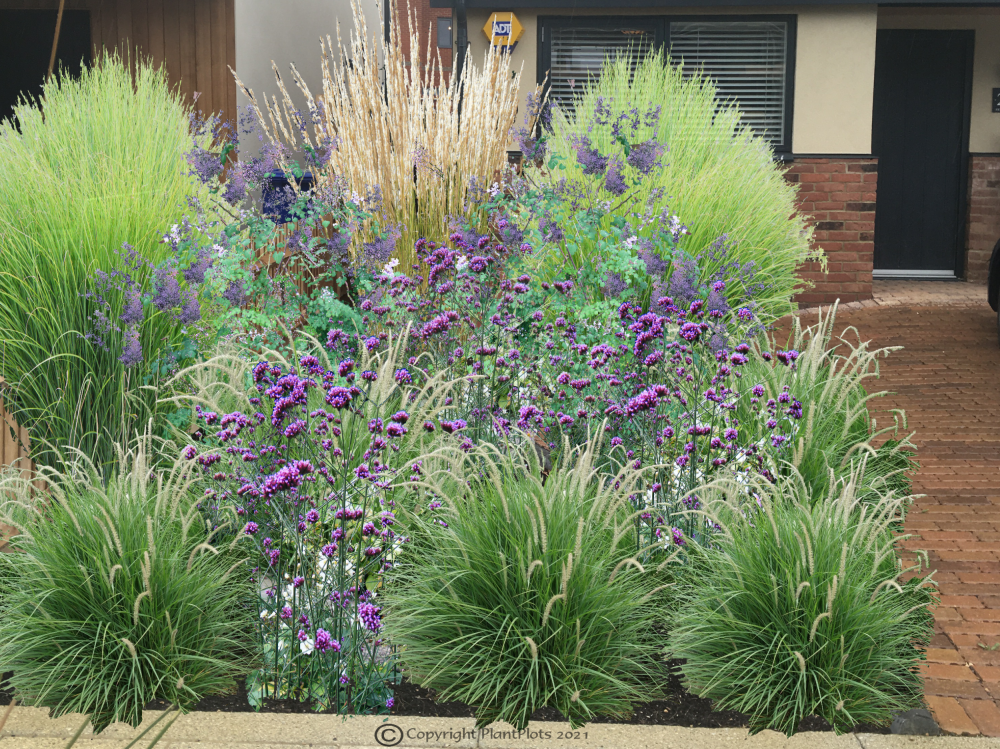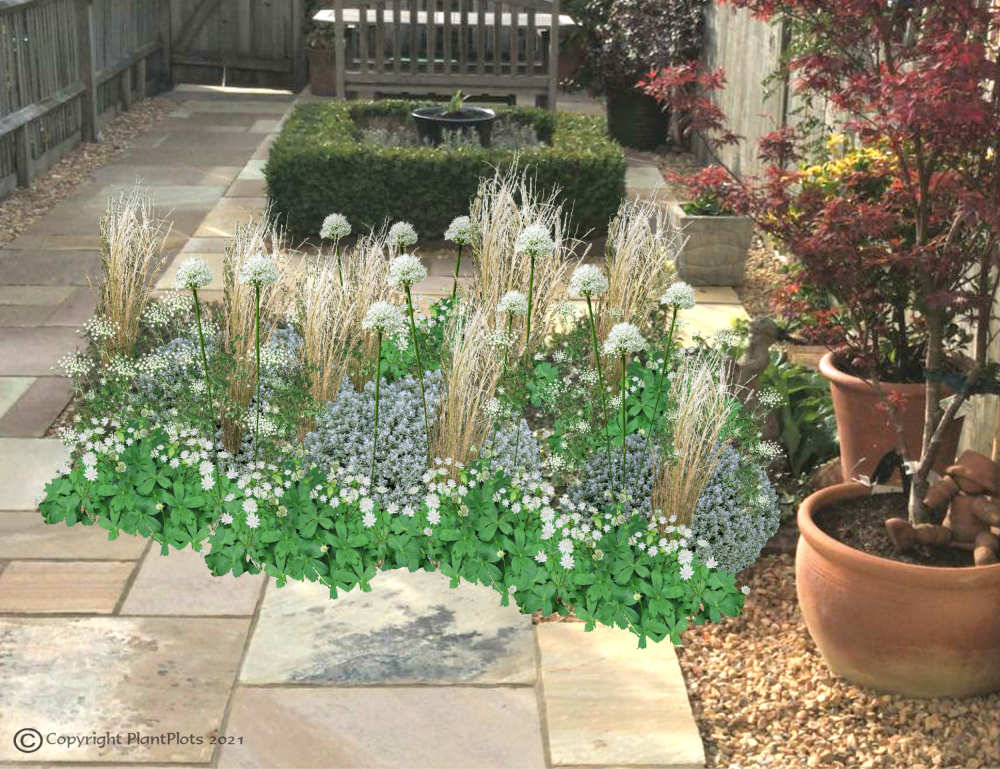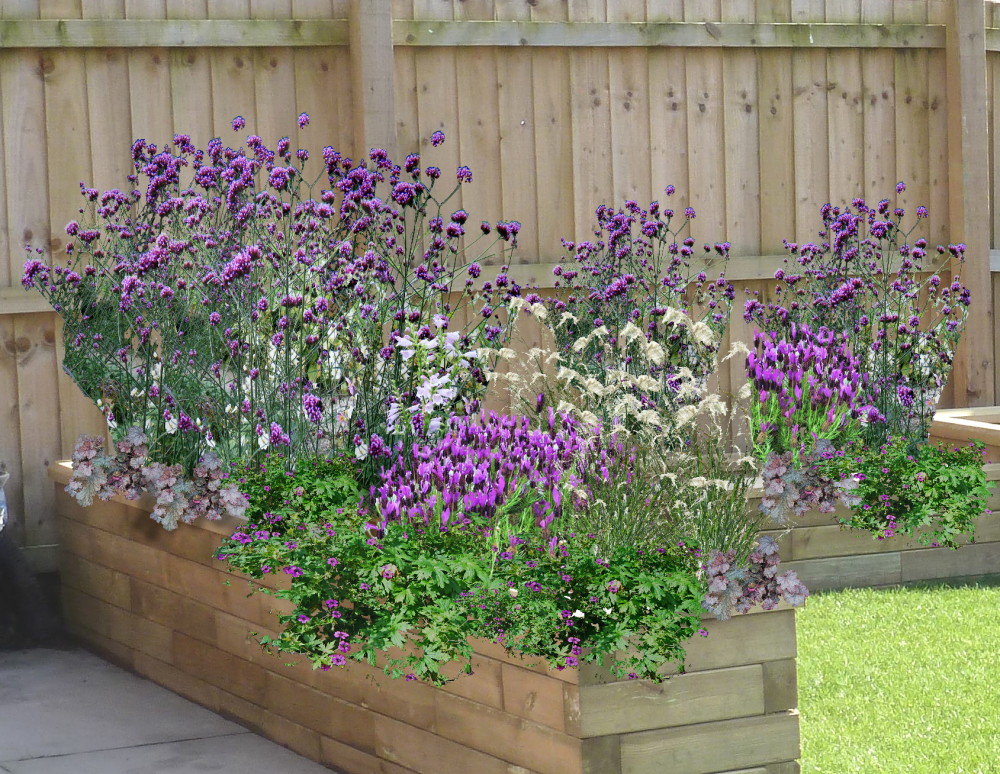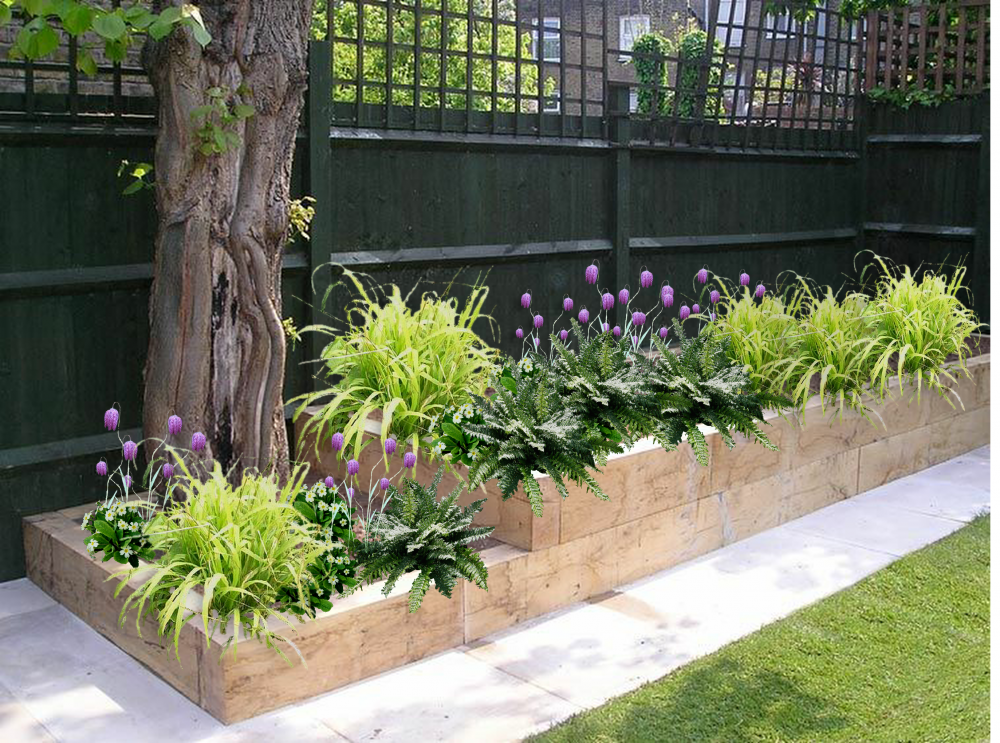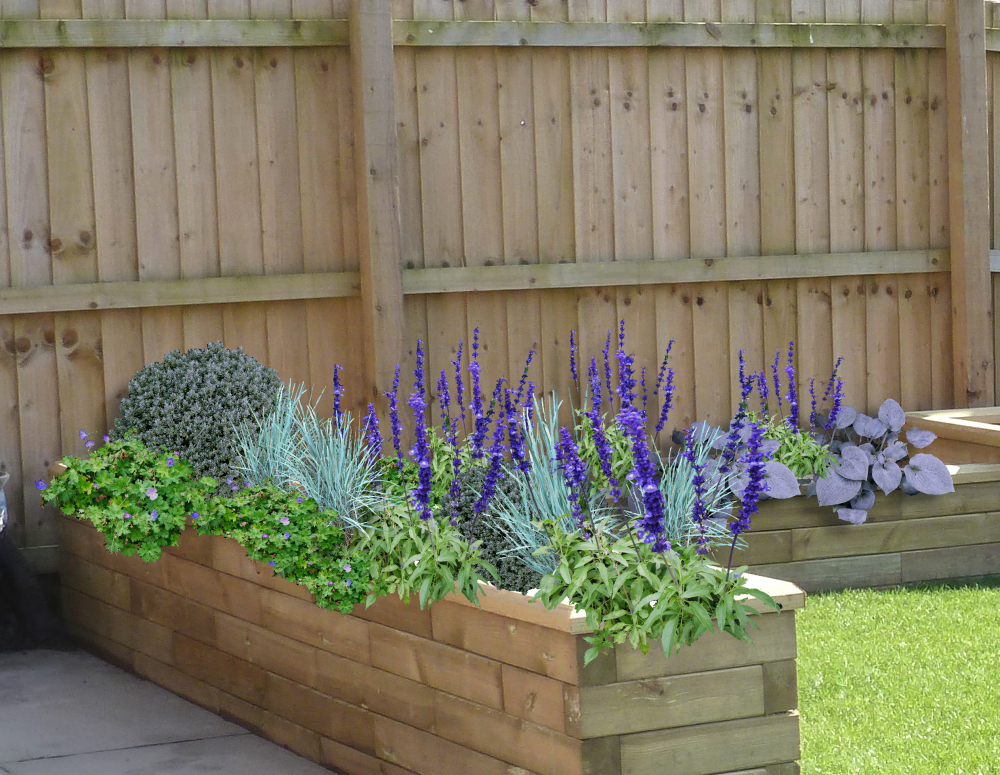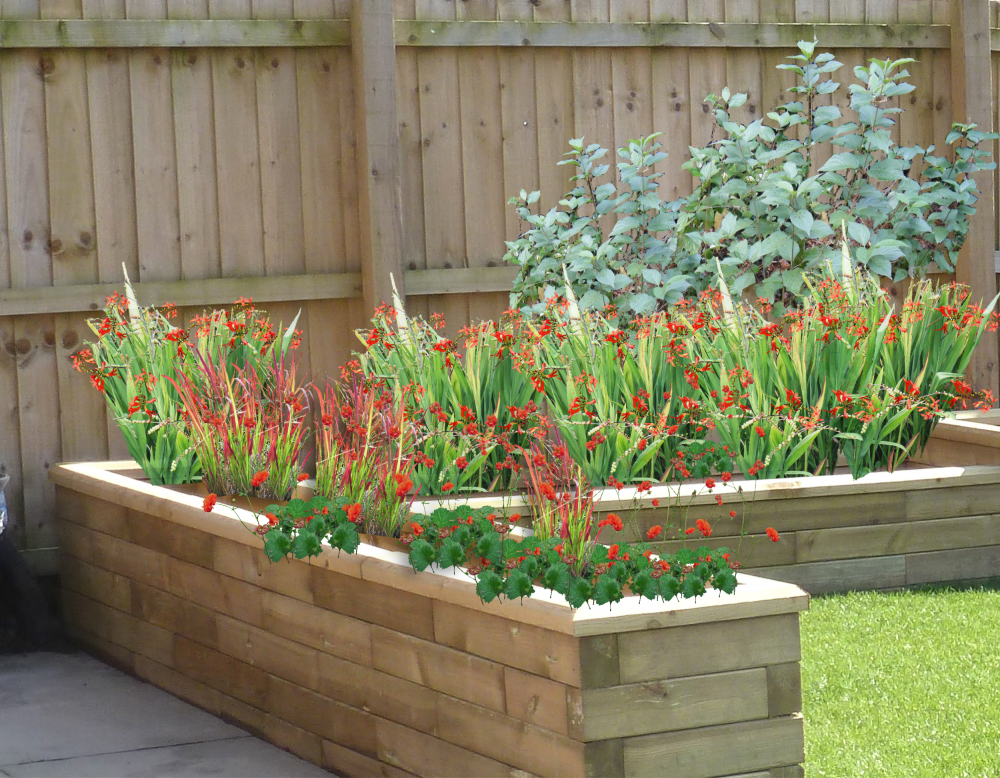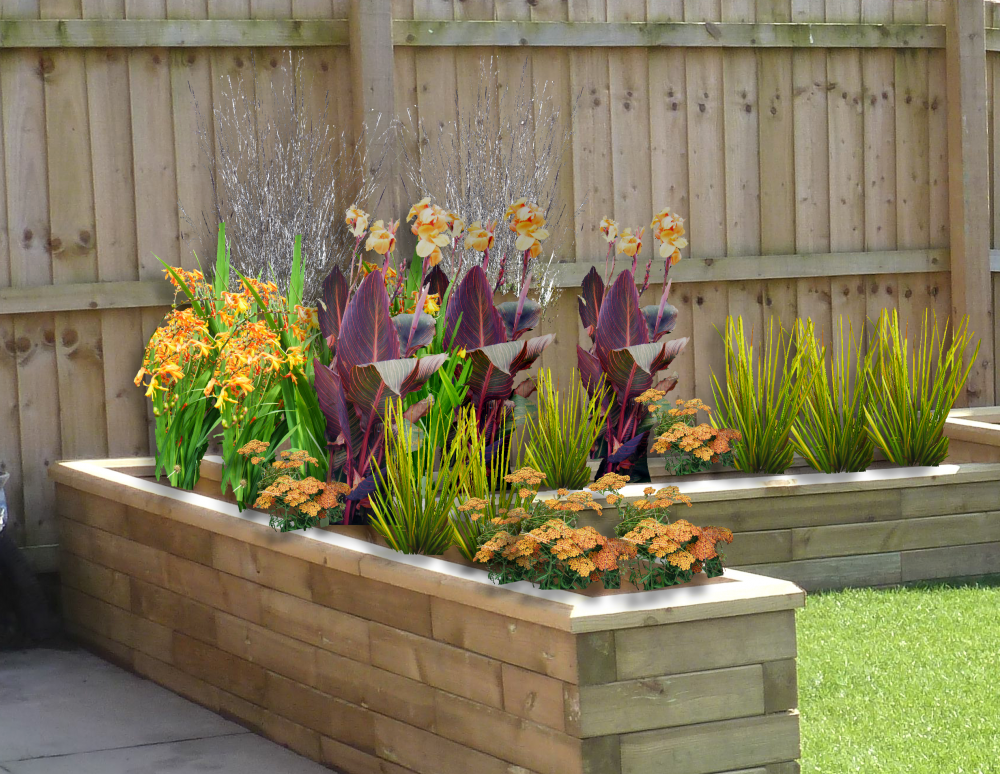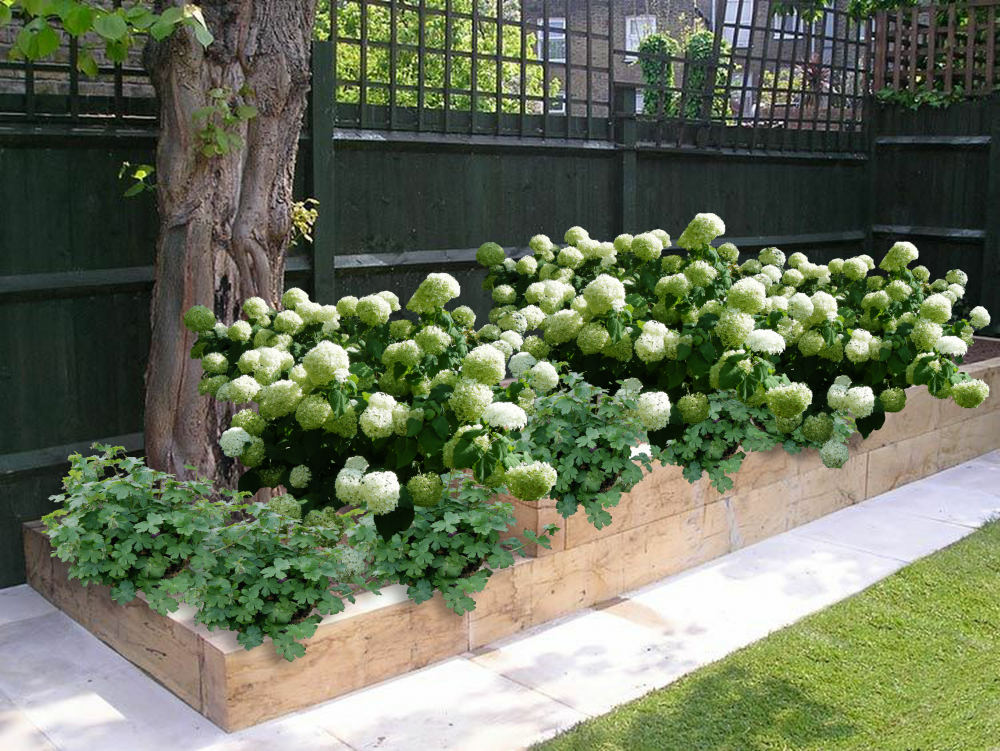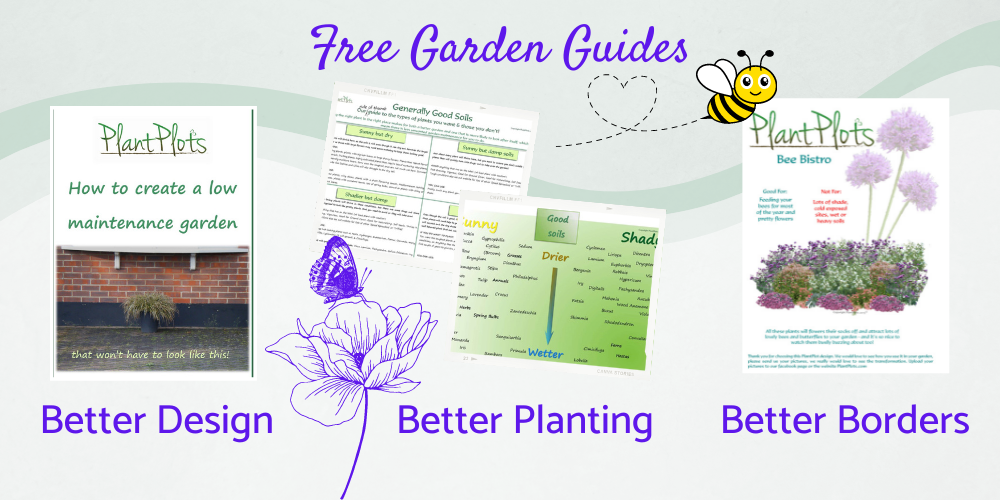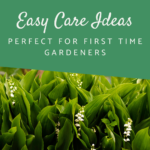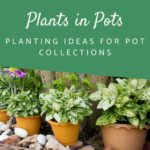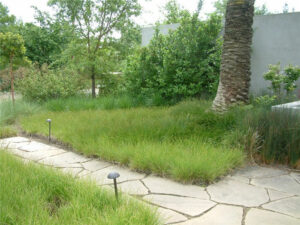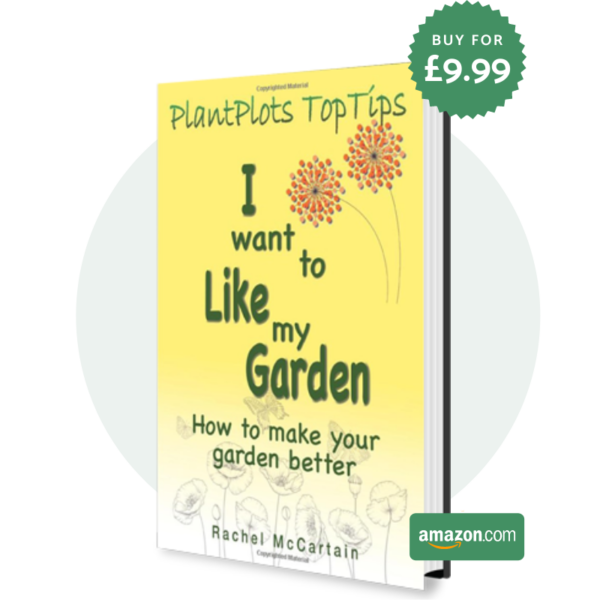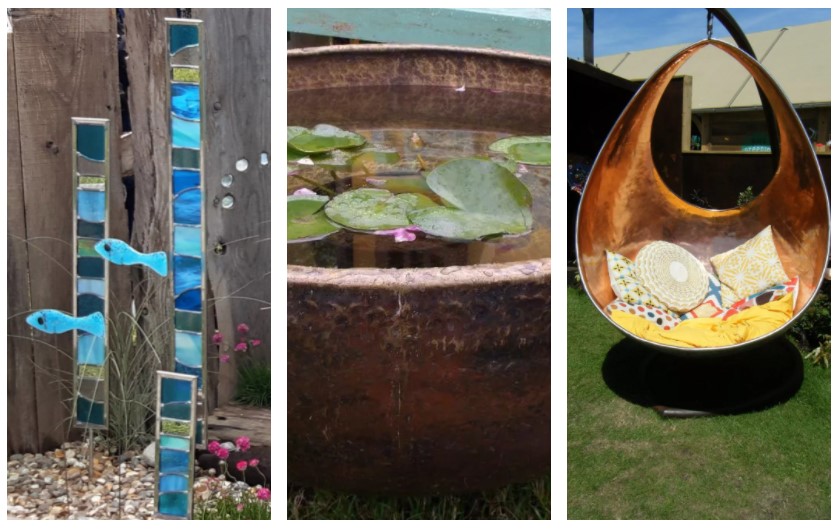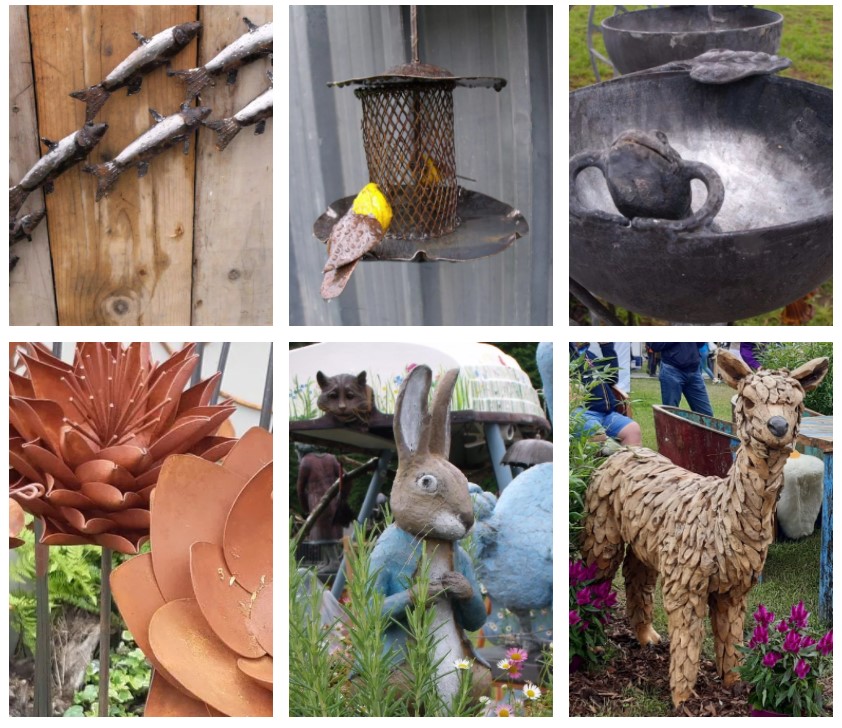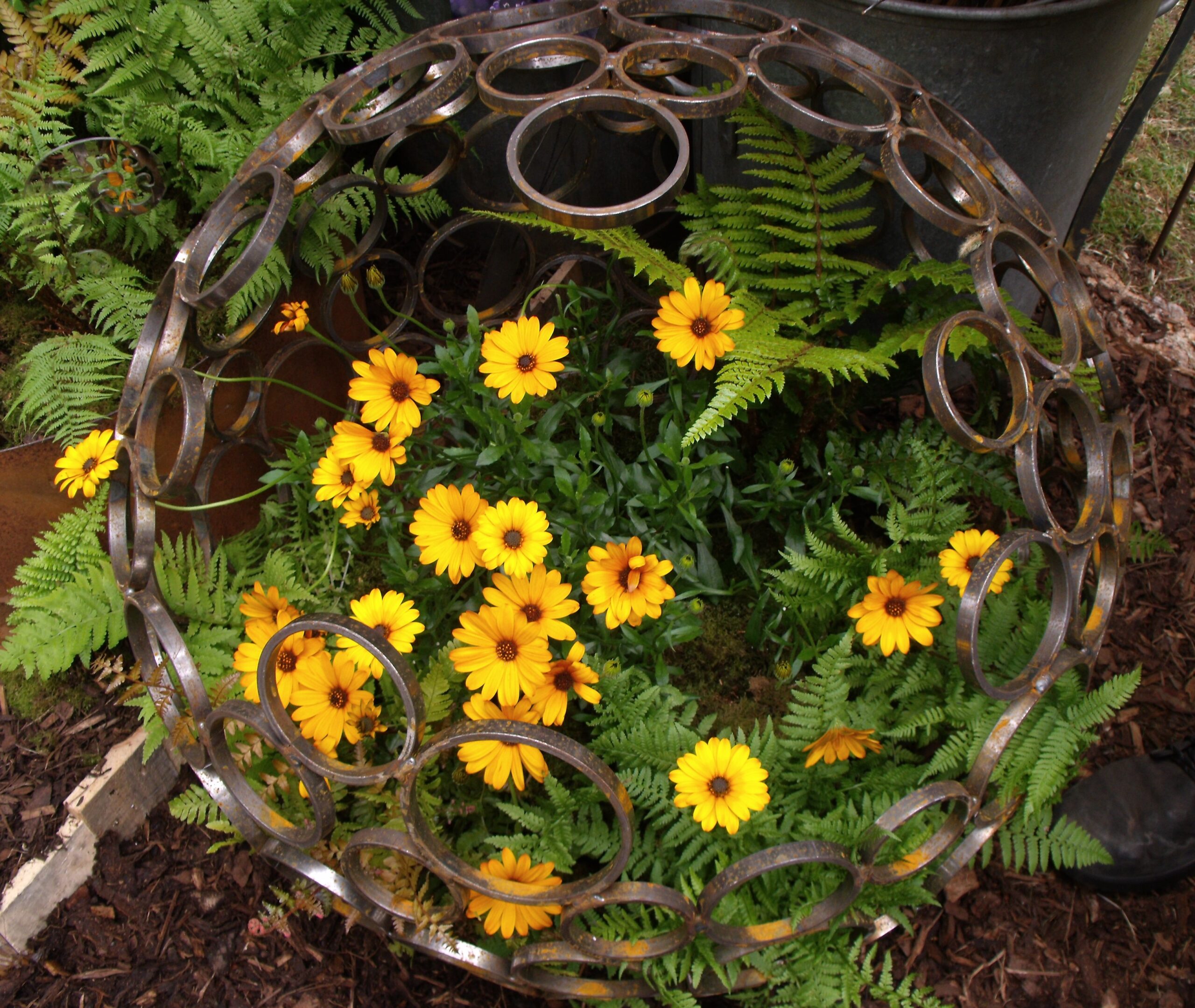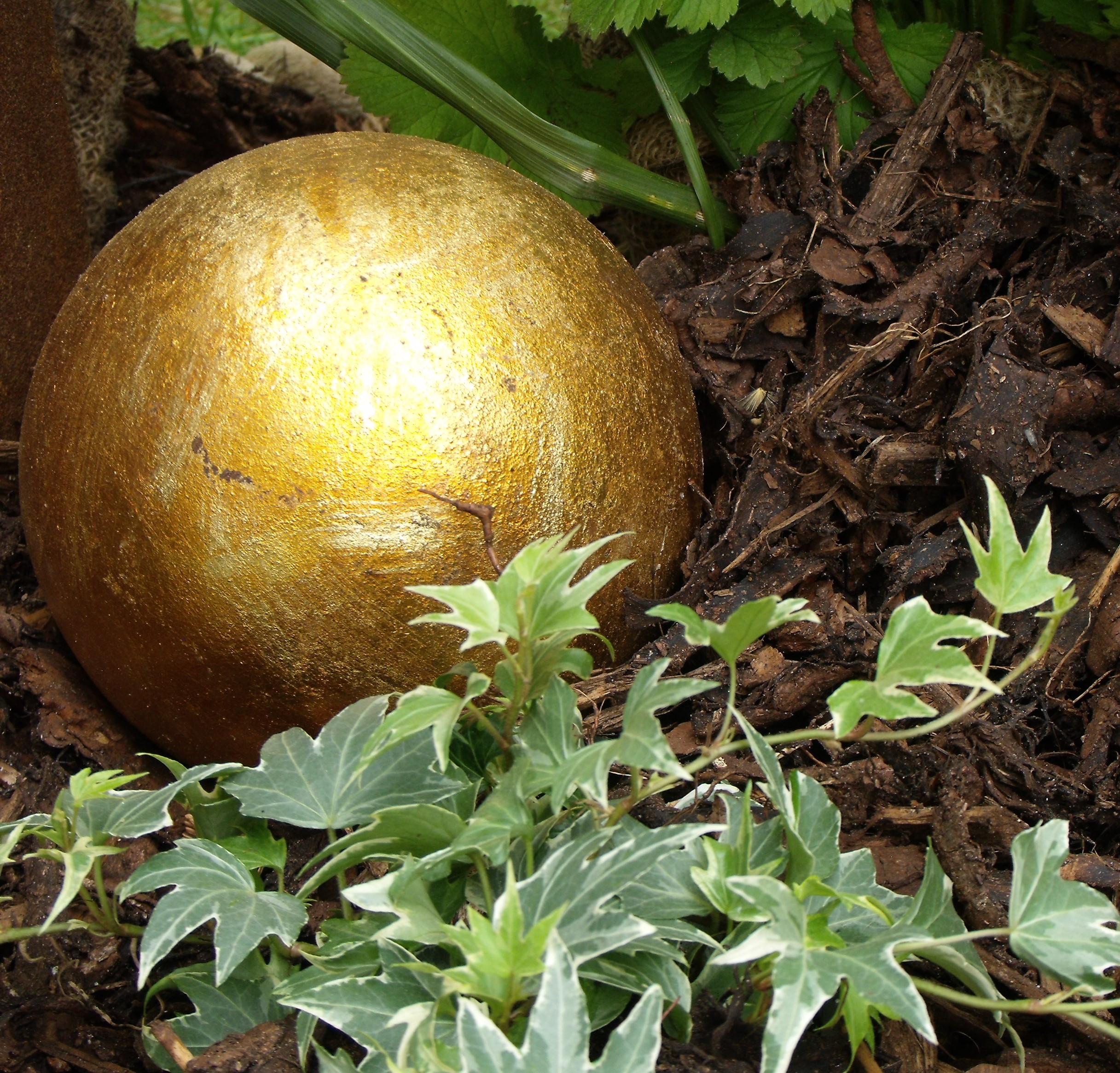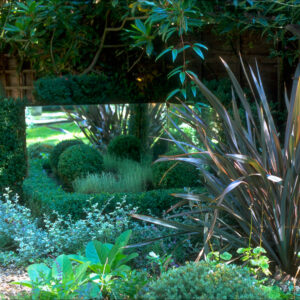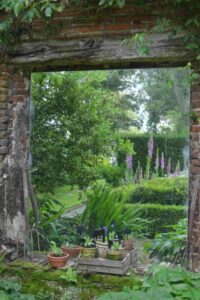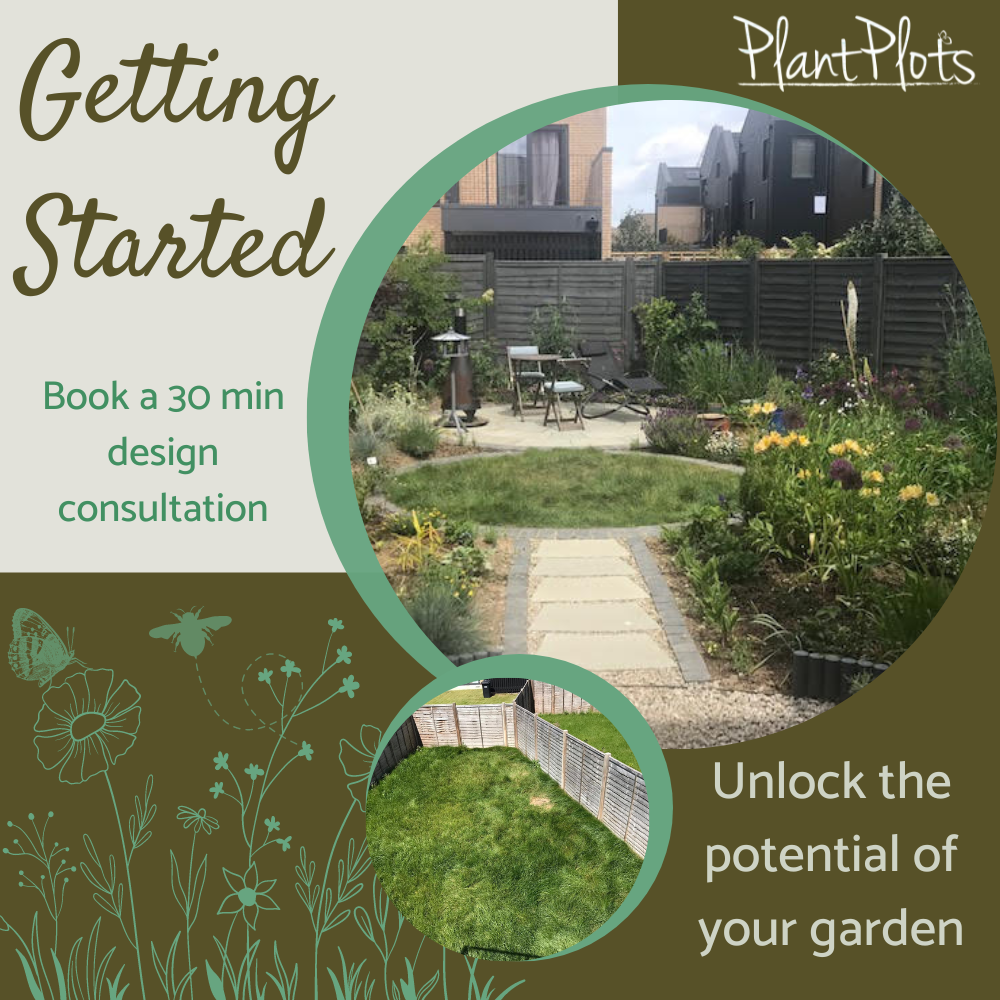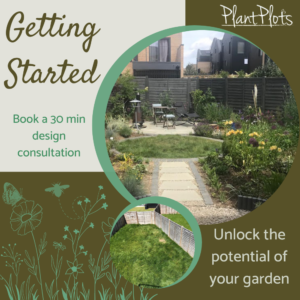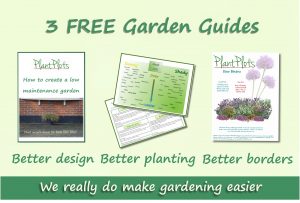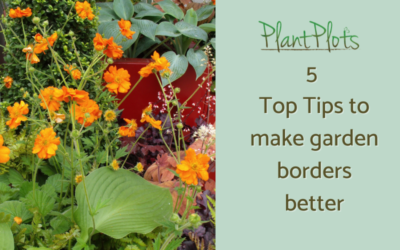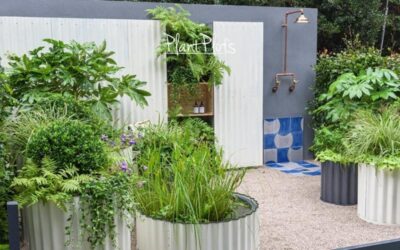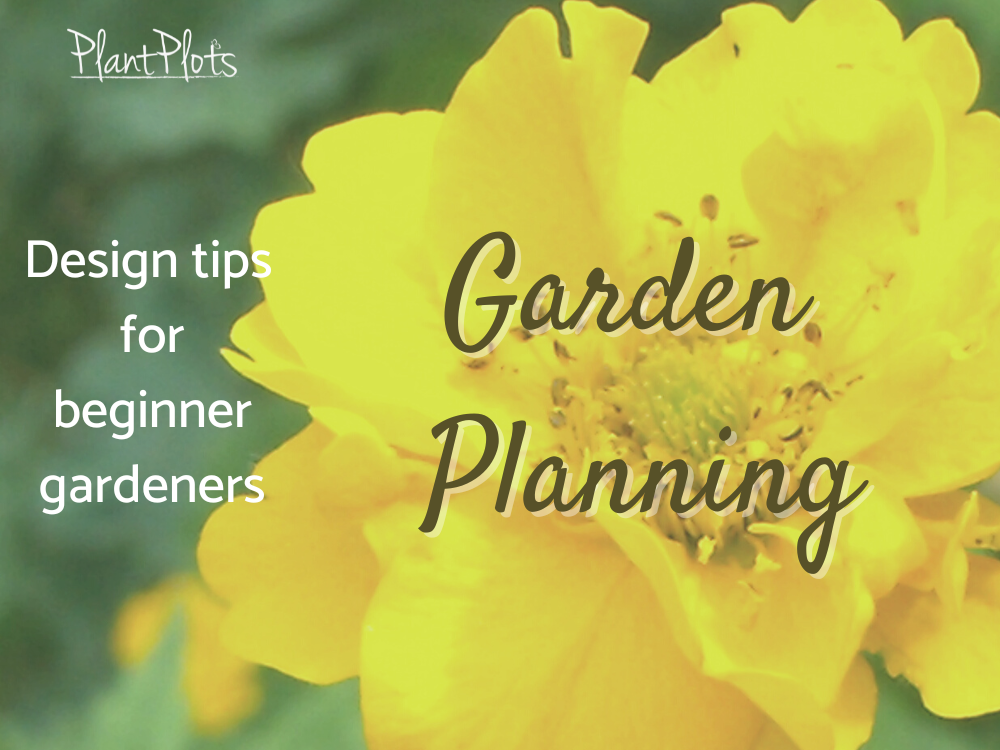
How to Plan your Garden
Brilliantly simple garden planning solutions for your garden
Garden design and planning doesn’t have to be complicated, but there are lots of decisions to make when you are looking to design and create your garden. Learn brilliantly simple design techniques and tricks to help plan your garden more easily.
If you can’t fined the answer to your garden issue, contact Rachel via WhatsApp
How can we help you?
Our consultation service is designed to help you with the issues you have regarding your garden. You may want advice on how to begin, creating a layout that works for you or advise on how to go about planting your garden.
Understand how and why your garden functions
Learn simple design principles that can transform your space
Improve the layout with simple cost effective changes
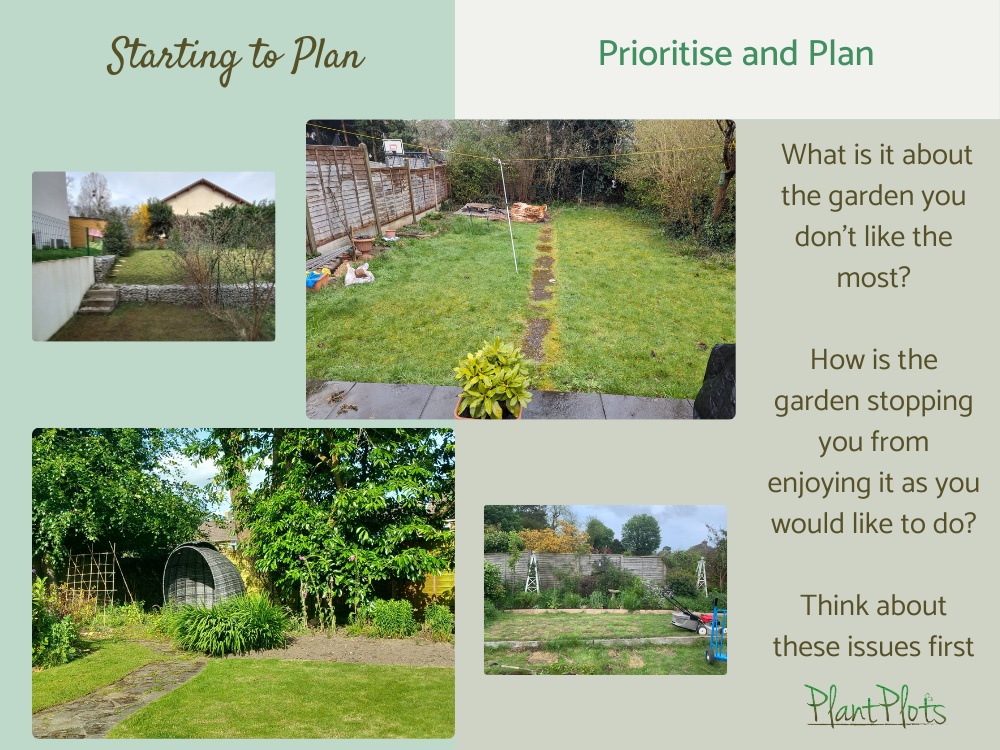
Family Friendly Gardens
What is a Family Garden anyway?
Creating a family friendly garden is all about making the kids want to use the space!
The terms family garden design or how to design a family garden are banded around by just about everyone. But what is a family garden supposed to do?
Is there a formula for creating a family garden design and if so what is it? Well if there was a simple x+y = success, most designers would be out of a job, but the truth is the term ‘family garden’ is simply assigned to any garden if it’s used by a family.
It is not usually a garden that has been designed for a family, usually it is a just garden which has a large space for a lawn. The assumption being, the kids will love and want space to run around in, or you have space to bung a climbing frame in the garden.
But this doesn’t create a family friendly space, it just creates a garden with a climbing frame in the middle! So what do you need to think about if you want to make this a garden everyone enjoys using.
Making a Plan
OK, this may seem pretty obvious, but if the garden is going to bring you all outside as a family; then the best way for this to happen is if it allows you understand all the needs and desires of the family as a whole.

This means you need to ditch conventional garden planning conventions and rethink from scratch.
As a family, sit down and write a list of things you enjoy doing outside together, and ask the children what they would like to have. Most importantly ask them what is boring about the garden now; their answers might surprise you.
Accept that you are not going to have a typical suburban garden anymore; but realise what you are gaining is a space that all the family enjoy spending time together in – away from screens, iPhones, Tablets and the PlayStation.
It might be you all love watching TV together and if that is your priority, well, find a way to have a screen outside.
Don’t spend a fortune creating the new garden
We all get bored of the same old things, it is human nature, and gardens are no exception. Your family will evolve too, what the children enjoy doing now, will not be what they enjoy doing in 5 years’ time.
Spending a fortune creating a fabulous garden now – may well result in a white elephant in a few years’ time.
Did you know we can design your garden without even visiting you
Gardens should be fun!

Gardens are created by adults but used by children.
The problem is we create gardens for adults, and hope the children will like using them.
Our gardens made are lovely and have borders and lawns, patios and pergolas and are perfectly functional outside spaces. But from a child’s perspective, what is the garden really like?
Childhood has changed, garden sizes have shrunk and the virtual world of the screen has captured all of us. Gardens no longer are interesting enough to want to be in if you are a child. The Xbox and PlayStation have much more exciting worlds to ‘play’ in. These worlds have dragons and dinosaurs, excitement, and danger and can be explored endlessly. If I were a child now, I wouldn’t want to sit in the garden and play swingball. I’d be immersed in the excitement of the screen too.
Now there is nothing inherently bad with computer games, the problem lies in the game’s ability to entertain for hours on end. The garden just cannot compete, it is a garden for adults not a garden for kids.
Consequently, when we say to go outside in the garden and play, the child sees it as almost a punishment, there’s nothing to ‘do’ outside! The garden doesn’t excite them.
We need to make gardens more interesting.
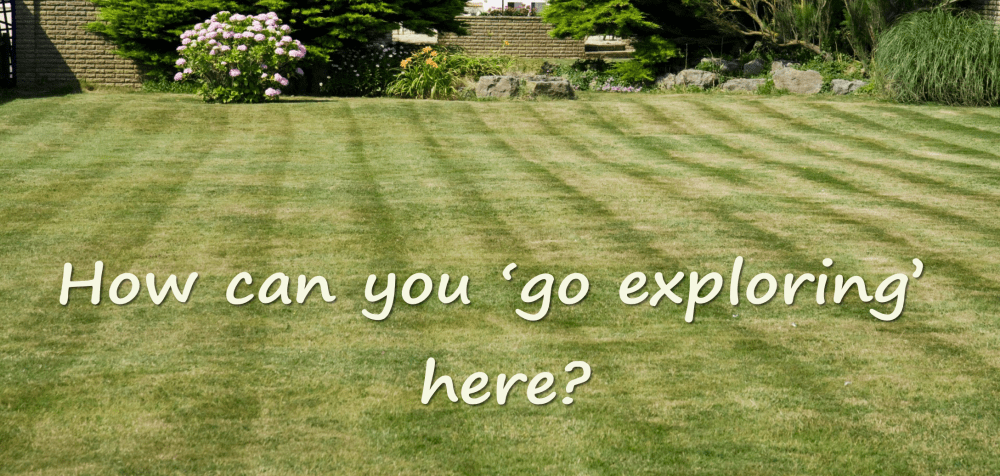
The Duchess of Sussex was absolutely on the ball with this, with her garden at the Chelsea Flower Show.
She clearly understood the positive benefit being outside had, not just because children are outside being active. But because their minds are not being fed a constant stream of ‘brain goop’ by the screen. Children need to use their imaginations.
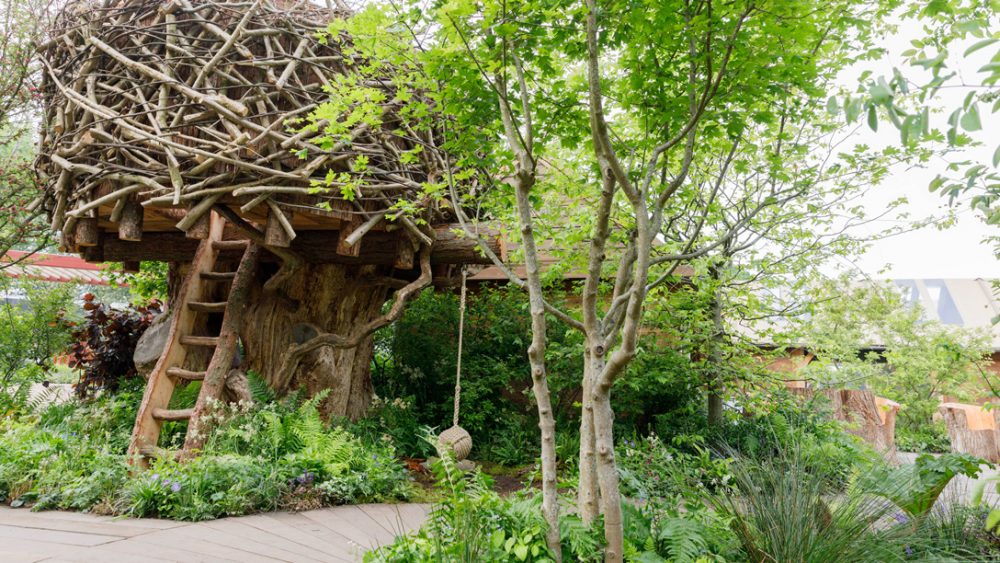
Children have no need to be bored anymore because the screen can instantly fill their minds with excitement. But it’s addictive and in the long term will not help them.
Now my childhood had lots of boring days, however, boredom is actually necessary for children’s brains to learn to be creative. It is the passive ‘feed me constant entertainment’ which is the real problem affecting our children’s development.
We need to get kids engaged more with nature and the world outside, the problem is how. If you have a small urban back garden, how do you create a garden your kids will love?
First, think like a child
We were all children once, we just have to remember how we played. It is how children still play now albeit electronically. They still run and jump, hide, play ‘bang-bang you’re dead’ games, and make forts and dens. Kids still have imaginary friends, it’s just this is increasingly a virtual experience.
The garden then needs to have places where the child can do all these activities for real. Bring a little excitement back in the garden. But in order to compete with electronic excitement, we need a bit of risk and danger.
When I was a child my father made a death slide. He strung a rope from the upstairs window and cut a hole in a washing-up bottle to act as the sliding grip. We stood on a step ladder, grasped the bottle and slid to our deaths down the slide.
Our bums got scuffed on the grass as we landed, fell off once or twice, and got a couple of bruises; but aged 6 it was fantastic fun. We were allowed to climb the tree at the bottom of the garden. But we were told to always have 3 points of contact before moving an arm or leg. This ensured we learned to take risks in a managed way.
The point is it didn’t need to be an expensive playground. In fact, makeshift and made by Mum and Dad IS what made it fantastic!

My brother and I did fall out of the tree, but only because we tried hanging off it like Tarzan. We learned Tarzan could only swing through the trees in films and not in real life. I survived, as did my brother!
Accept there will be mishaps
Now I am not advocating the absolution of parental responsibility, our role is to introduce excitement without stupid risks. It is also to accept that our kids will get dirty, eat worms (me) or possibly bird poo, (my younger brother who is now a Professor of Astrophysics), fall in stinging nettles and get a bit bruised. Maybe it’s best to not put a trampoline on a concrete patio. But why not put the slide under the tree, so kids have to climb the tree to go down the slide?
Ask your children what they would like!
The easiest way to get engagement and interest is to ask. In my garden, the path was created with a slight slope. It was more fun on skates, skateboarding and when learning to ride a bike. Another really simple idea is to have a grass mound. If a space is left for a plank, then all of a sudden the mound becomes a launch pad for learning BMX bike tricks.
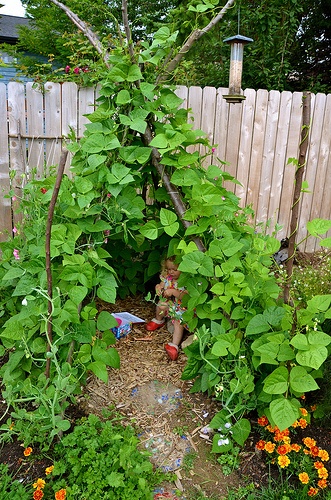
Climb, Jump, Dangle and Hide
Imagine, when your buddies came round to play, you could all do those things because you were allowed to in the garden. The imaginative play would spawn itself, dens would appear. Maybe even a campfire; which even in a small garden is possible achievable and doable.
The restrictions on the kid’s play are created by us. “Don’t kick a ball into the flower beds. Don’t climb on the shed roof, you could fall off. Be careful. Don’t do bike tricks on the grass it messes it up!”
Toys are brightly coloured, plastic and put away after use; the garden needs to be tidied like the house is.
No, it doesn’t.
The patio is the adult space, the rest is for the kids
Gardens aren’t forever, they need to change and evolve over time
If you want to get the kids outside and off their screens you need to think more radically about your garden and the role it needs to play. It needs to be an interesting enticing space; a garden for kids.
Get the Children Growing
Grow your own is great, but if we read all the articles on homegrown food, the impression given, is one of an idyllic family, growing perfect veg and only ever harvesting on a beautiful sunny day! The reality is not quite like that though
Children love the idea of growing stuff, but their attention spans can be quite short. So although, the intention is that they get involved in watering and picking the produce, often the reality is; they don’t.
Plus the problem with vegetable patches is what happens after you have picked the produce. Let’s face it growing produce is functional, not pretty. Once the veg has been picked or is picked, often the plants and the vegetable growing area look pretty unattractive.
So some tips for growing food to eat in the garden- if you want the kids to join in:
- Start small. A few pots with tomatoes or carrots for example are fine. If the kids are happy helping here, then you can do more next year.
- Grow what the kids want to eat. Sorry but a line of lettuce is not going to inspire most kids. Plant strawberries or raspberries (although bigger and a bit prickly), Plant fruit or veg with cool-sounding names or veg that can grow big – so pumpkins.
- Give them a small area just for them to grow stuff. And don’t interfere/help or tidy it up.
- Use pots rather than a garden border – these can be more easily hidden away if the kids forget to water!
This may sound a bit defeatist, but think of it as easing yourself and the children into growing fruit and veg. By starting small you manage your growing expectations more sensibly.
Grow your own in a small garden will not ever provide enough food for lots of family meals, but that’s not the point of it.
The point is your children start to make a connection with where their food comes from, with how nature works and how they can enjoy being outside in the garden more.
And that will help make your garden a wonderful space for all the family to enjoy.
see also Garden Design Layouts
How useful are large lawns then at providing children space to play and still provide space for you to sit? For a moment then, I need you to consider and evaluate your garden; ask yourself some questions:
- How much time do the kids spend ‘running’ around the lawn
- Which part of the lawn do they play in, all of it or just part of it?
- Is the climbing frame, swing or goal put in the only place it will fit, or just furthest away from the patio?
- What ‘running around’ games in the garden; CAN the kids actually play, or is the lawn really too small
- What do you do in the garden to enjoy being there – watch the kids play, sit and relax, sunbathe or do you play games with the children too?
- Do you restrict what the children do, in case they damage the plants, or fences or might kick a ball into the windows?
Losing the lawn will free up more time
Now this is the biggy; consider ditching a lawn altogether, but I don’t mean paving over it or filling it with a border, what I mean is consider ditching the manicured, mown green grass space you spend time every week cutting…
You can still put a climbing frame on this ‘lawn’ – you just don’t have to mow it,
The only exception to this low-cost rule is the seating area. The sun won’t change where it shines, so the nicest part of the garden to sit in will always be in the same place. The patio will be the only part of the garden that won’t evolve over time but create a patio large enough to be usable, which is now far easier if you aren’t factoring in a large open lawn area.
Get the children growing
Grow your own is great, but if we read all the articles on homegrown food, the impression given, is one of an idyllic family, growing perfect veg and only ever harvesting on a beautiful sunny day! The reality is not quite like that though
Children love the idea of growing stuff, but their attention spans can be quite short. So although, the intention is that they get involved in watering and picking the produce, often the reality is; they don’t.
Plus the problem with vegetable patches is what happens after you have picked the produce. Let’s face it growing produce is functional, not pretty. Once the veg has been picked or is picked, often the plants and the vegetable growing area look pretty unattractive.
So some tips for growing food to eat in the garden- if you want the kids to join in:
- Start small. A few pots with tomatoes or carrots for example are fine. If the kids are happy helping here, then you can do more next year.
- Grow what the kids want to eat. Sorry but a line of lettuce is not going to inspire most kids. Plant strawberries or raspberries (although bigger and a bit prickly), Plant fruit or veg with cool-sounding names or veg that can grow big – so pumpkins.
- Give them a small area just for them to grow stuff. And don’t interfere/help or tidy it up.
- Use pots rather than a garden border – these can be more easily hidden away if the kids forget to water!
This may sound a bit defeatist, but think of it as easing yourself and the children into growing fruit and veg. By starting small you manage your growing expectations more sensibly.
Grow your own in a small garden will not ever provide enough food for lots of family meals, but that’s not the point of it.
The point is your children start to make a connection with where their food comes from, with how nature works and how they can enjoy being outside in the garden more.
And that will help make your garden a wonderful space for all the family to enjoy.
see also Garden Design Layouts
Dealing with Ugly Views and Features
How to hide ugly garden features
Simple design tricks and ideas to help you get the most from every garden – whatever the views!
Wouldn’t it be lovely if every part of the garden looked lovely, but sadly this is not the norm. Most gardens have an unloved area, a part of the garden you wished wasn’t there or an immovable feature that is just downright ugly. The trouble is as modern gardens are so much smaller, the ugly bits become even more noticeable. So here are some easy design tips and tricks to help hide ugly garden features such as paths, walls and fences!
Distraction – you can’t hide ugly objects in a small space. You just need to make them less noticeable.
Every garden has its bad bit, the problem arises when the bad bits become THE garden feature. So how do you reduce the negative visual impact?
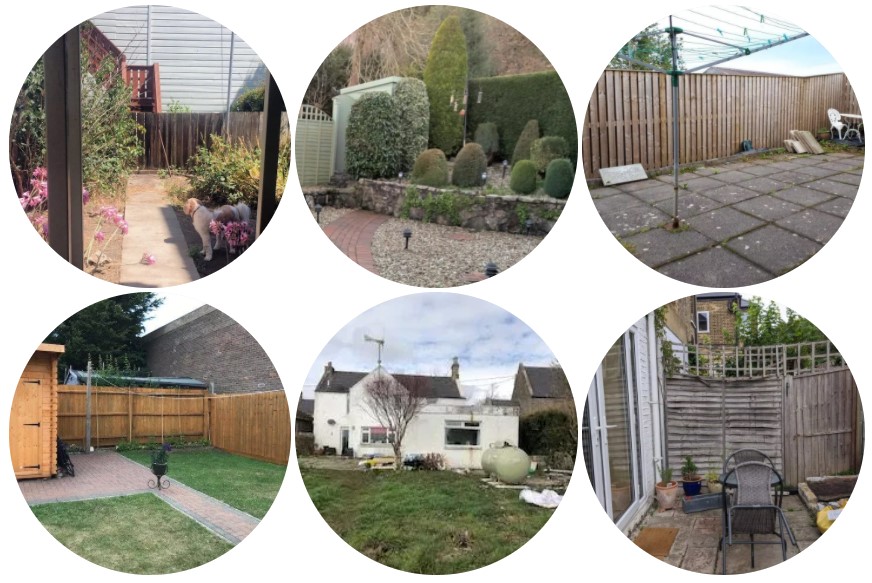
With all these images, there is one common problem, one missing element that means all you end up looking at is the unattractive features. These could be concrete paths, bland paving slabs or lots of fence panels. So what is the missing element?
A ‘Look at Me Instead’ feature!
The problem with hiding large unattractive features is, what is doing the hiding has to be large as well. You simply replace one ugly element with a larger less ugly one.
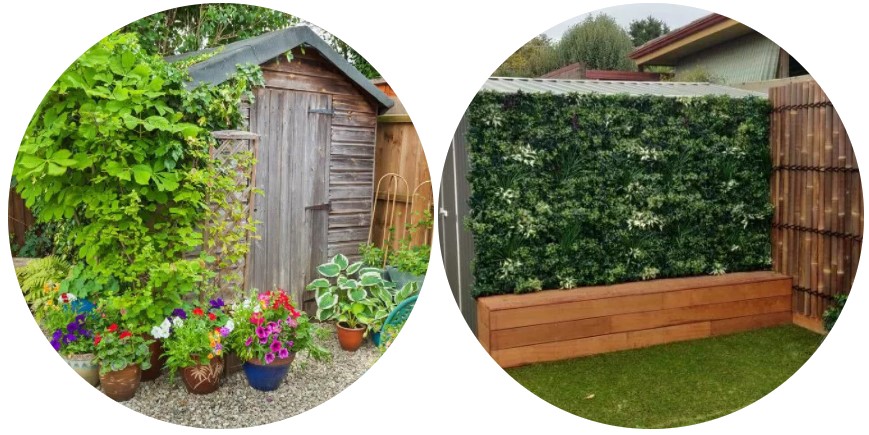
Does adding a green ‘wall’ make the ugly less ugly? All that is accomplished is more attention is drawn to the one part you don’t want to notice. It becomes more noticeable because it is trying to hide something. Curiosity though, makes us look for the element that is hidden away.
A different approach is needed.
Distraction Technique Number 1 – Add something unexpected.
This is all about creating an ‘oooh what’s that’ or an ‘oh, that’s a clever idea’ response. Add something to the ugliness that is so totally different, it takes over from the ugliness behind it. And the best part is that this can be anything YOU LIKE!
Distraction Technique Number 2 – Make a big bold feature elsewhere
Now, this may seem blindingly obvious, but in a small garden, one big tall bright bold border or feature will shout and demand your attention. This is especially the case if you can add movement to the garden also. We watch things that move more than we watch things that don’t.
Mesmerising isn’t it?

All you need is one small space that is just for you, where the world is ‘outside’ and you are surrounded by the things that make you happy.
So it’s all about language, if we stop trying to ‘hide ugly features’ and instead think of ways distract ourselves – we open up a world of interesting options.
Hiding the neighbour’s ugly garden wall
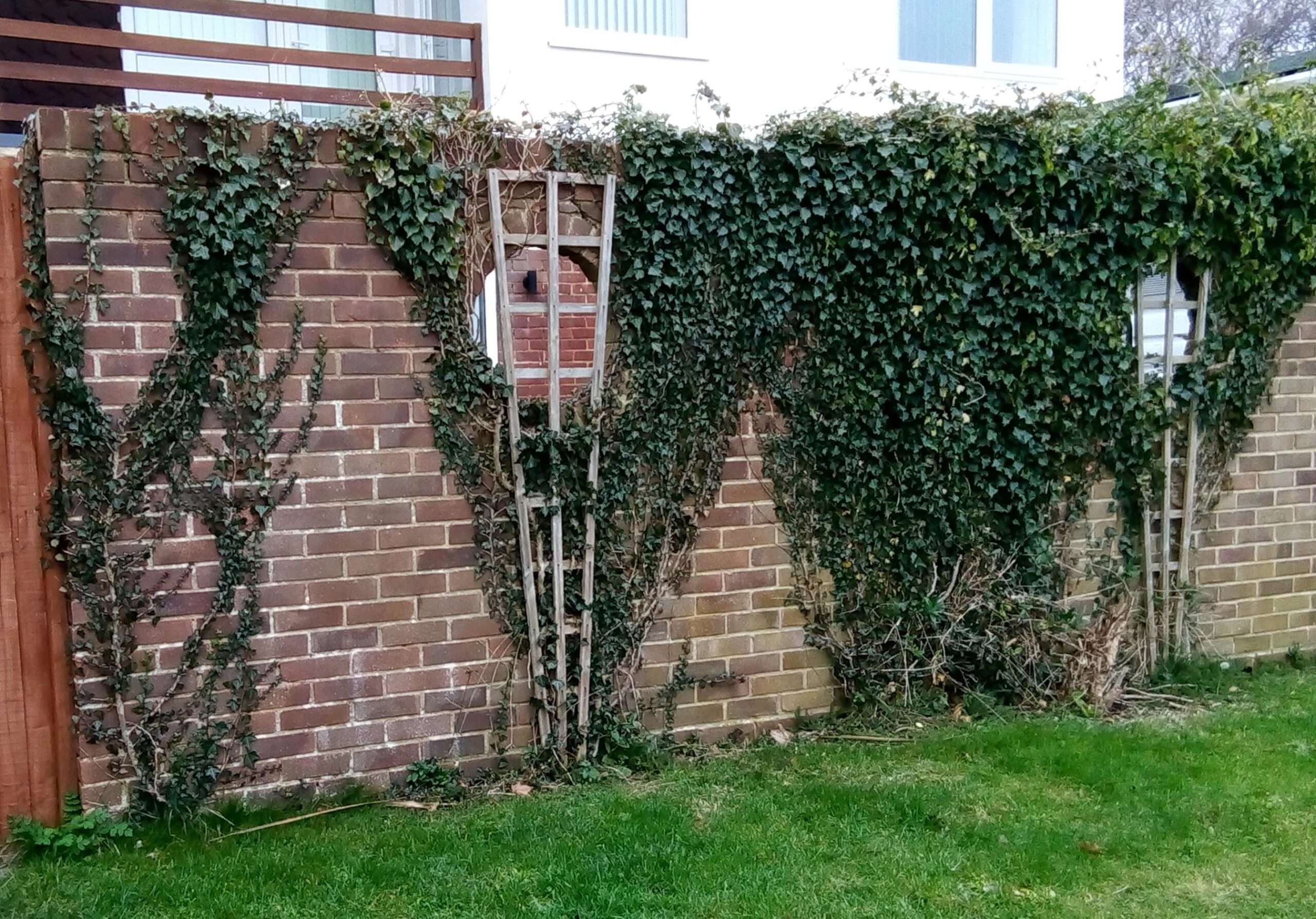
Whilst it would be lovely to look out of the window and see a beautiful view, the reality is that normally it’s not quite so stunning!
The remedy for many people is to plant a big dense green hedge to disguise the ugly view. The problem is that you get a dull view instead!
So let’s think a little differently, as most of you will probably already have the hedge or fence, you need to concentrate on making that more interesting. Consequently, you will not notice the hedge or the ‘neighbour’s ugly bits’ so much.
Similarly, you need to distract the eye from ugly images, by adding something interesting to look at. In the picture above, all you really notice is how tall the neighbour’s house is!
To counteract this, and to bring your eye line down to the stuff you want to notice. So now some trellis has been added that sits above the wall, climbers can then be planted to soften the harshness and dominance of the wall.
Tall planters try to re-balance the view (less brick wall, more nice wall), and then the planting is really quite bright and bold, so hopefully, you notice this much more than the house behind.
You may think why not a tree there, well, a tree tall enough to hide the wall will have roots big enough to crack the walls too – it would be too close to foundations and thus not advisable.
Hiding the neighbour’s ugly garden then involves one basic principle.
Don’t try to hide it, create a ‘look at me instead’ part of the garden. Simple eh?
Plan your view.
Take a chair into the garden and sit down. Shut your eyes and open them again – what’s the first thing that catches your eye. Repeat this by moving the chair to face different angles in the garden.
You will now have a plan of ‘first impressions’ in the garden, some of which will be good and some not so good. So what to do now….
If the bits you would rather not see are impossible to exlcude from view, then the simplest solution is to turn your back on them. If you sit down facing away from the eyesore, you can look at something nicer.
Then with the orientation of your seating area sorted, you can create an area of the garden that is really good to look at. In this way, you control what you want to see.

Gardens can be made less ugly and more interesting with a little thought, as long as you concentrate on distracting your eye so that it doesn’t stay looking at the ugly bit because it has a more attractive bit to look at.
Now clearly we could write a book on garden design that will help you plan even the narrowest of gardens better – which is brilliant because there IS a book to help you
I Want to Like my Garden by Rachel McCartain available at Amazon and other online bookstores in eBook and Paperback
Adding Focal Points
Every garden needs a focus, the place you enjoy looking at. But in a small garden, how can you achieve this?
Every garden needs more than just plants, patios and grass. How to make a garden more interesting by adding focal points. Focal points create views, garden art and sculptures can be used, but sometimes simply altering the height of a hedge can also create a more interesting feature.
What can be added to the garden that helps transform it from ordinary into extraordinary? Are there tricks garden designers use, and if so what are they? And how you can make your garden a more vibrant interesting space to be; even if the garden is small and the budget is limited.
Views and focal points
Every garden needs stuff you enjoy looking at, such as a view and or a focal point. The view channels attention toward an area where there is a focal point. The design encourages you to look toward a specific point, but does that make it interesting? And is the focal point itself ‘interesting’? Adding objects and creating a view does not automatically make any garden interesting. We first need to understand how we become interested in something.
Take this view, for example, it’s perfectly lovely, very nice etc – but is it interesting, and if not why not?
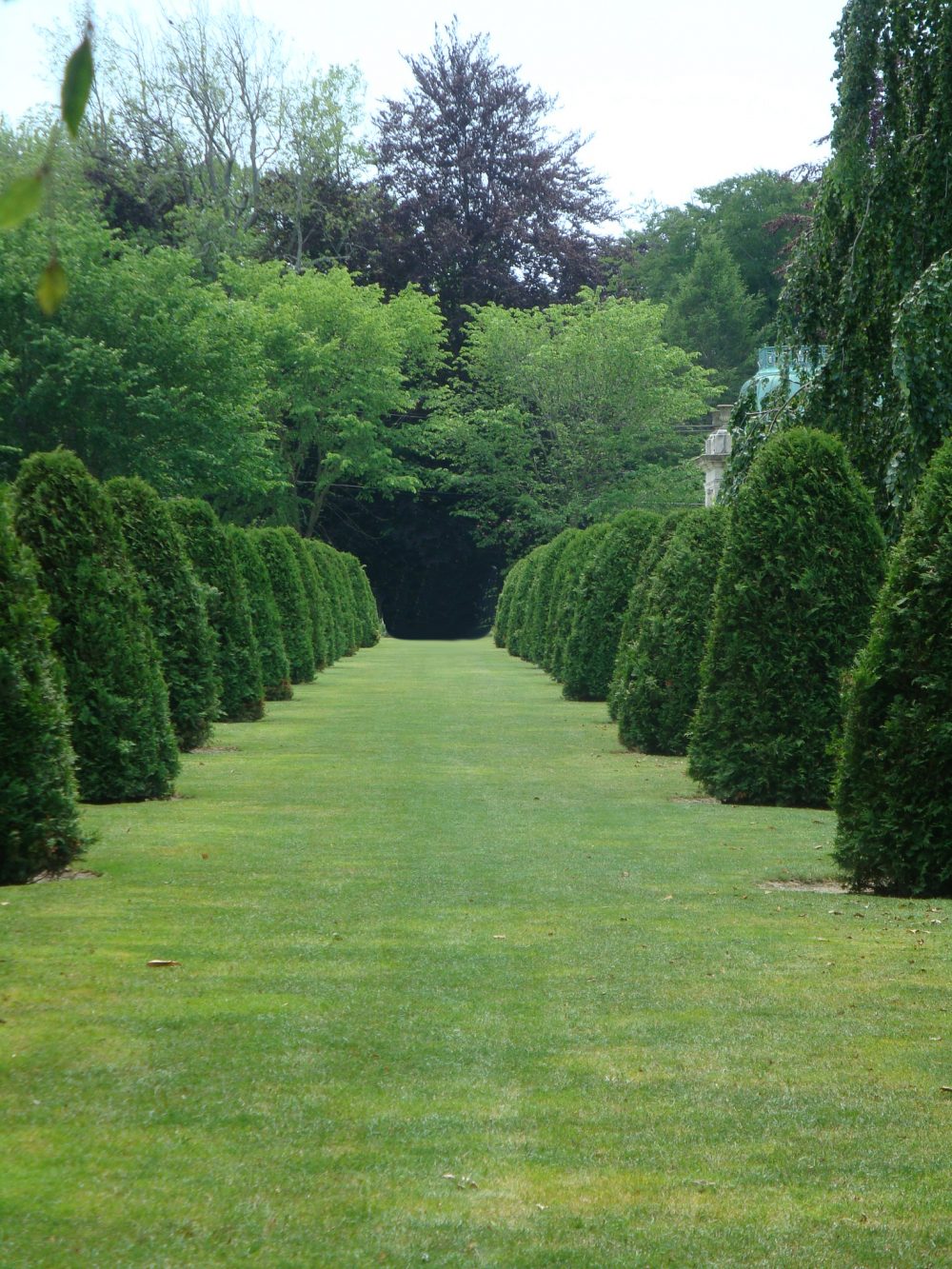
What is missing?
Understand the triggers the human brain needs to notice something, these use those triggers in a garden setting.
OK, so are you watching the video? What is it that is interesting you? The mesmerising motion, the change of the shapes, the light glinting on the shiny surfaces. This wind sculpture demands you just watch it, it captures your senses, and not just your visual sense, it sparks your imagination too.
Motion, changes of light, sound, contrasts between light and dark and noise all make you look and see what is there.
It is this emotional intrigue and NOT what the object is, that interests us.
So although the Anthony Howe wind sculpture is lovely; you don’t need something quite as spectacular to captivate your attention. How to make a garden interesting then is really all about stimulating your senses and creating emotions from those senses.
What emotions are you trying to create?
This is the part that is dependent on individual taste, only you know how you would like the garden to make you feel. It might be you need to feel detached from the busy world around you, maybe you want to feel immersed in the nature around you or perhaps you just want to feel happy! The art, sculptures, and views around the garden should reflect the emotion you seek.
For example, happy gardens don’t just need to be filled with bright colourful flowers, the garden needs to be filled with other things that make you happy too.
A view is created in the garden by drawing your attention to an area. A focal point is added to create the interest, but just adding a sculpture or an urn filled with plants for example; although nice, won’t make the garden more interesting. You need to add emotional interest.
What types of art or sculpture should be used?
The fundamental question you need to ask is how and what. WHAT emotion am you trying to evoke and HOW will this sculpture, water feature, art work help achieve that?
Clearly what interests you will not be the same as someone else, but that is part of the fun of gardening – everyone is different!
Adding features to any garden will not make it more interesting unless that feature ticks an emotional box for you. In my case, I love watching plants move more than anything else, I enjoy watching bees and insects flit amongst the plants and I love the sound of buzzing bees looking for nectar. That makes my garden interesting for me.
Once you understand why you want something; it is easier to find a solution! And there is no snobbery in gardening, you can have whatever you like in a garden – as long as you like it and its interesting!
Expand the Garden with Mirrors
Mirrors can add real Wow factor – but you need to understand how to use them
I have always been a lover of garden mirrors. Mirrors are a great design tool, available in every shape and size, but mostly because; a well-placed mirror in the garden can transform the ordinary into the extraordinary! For more help and advice watch our design videos
What’s so great about garden mirrors?
Mirrors have 4 main functions in any garden;
- To reflect sunlight into dark spaces
- They add depth to a garden
- Mirrors can be used to help hide uglier objects
- The mirror itself is a piece of artwork or garden sculpture.
Having said all that though, getting a the mirror placement right can be a bit tricky and there are some rules to follow. The key point is this though, it is what the mirror does that is the important bit and not what the mirror looks like that is important.
For example, take a look at these pictures of mirrors in the garden. Which ones look the best. But more importantly, why do they look better?
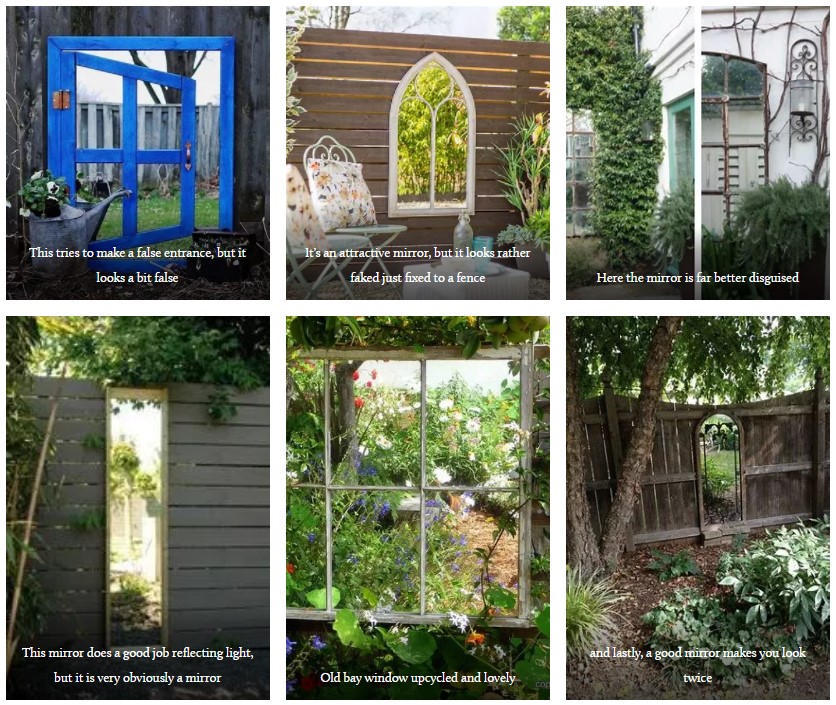
Lightening darker corners
Every garden has it’s dark dingy corner and mirrors are brilliant at increasing light levels. The key to the mirror becoming a feature and not a discussion point (oh, there’s a mirror there’) is how the light is reflected back into the space.
The worst thing the mirror can reflect is direct sunshine and the sky, it will just look odd, the mirror needs to only reflect ambient light. Angle the mirror so that from your favourite seating area, the mirror will reflect back an image you want to see. Then try to conceal the edges of the mirror, it’s just the light you want to notice and not the mirror itself. This placement is almost right, the edges of the mirror need to be disguised to create a better illusion.
(image A Jones)
Adding depth to a garden
A mirror in the garden is absolutely brilliant at this, but in order for it to work well, the reflected image should as far as possible be plants and not open space.
That is because as you walk past the mirror, you or part of you will be reflected too. Motion is something we always notice, so the reflection or anyone walking past will pop out ruin the illusion.
In this image the mirror is less noticeable as an object, but it creates a gap in the wall. Sadly birds will fly through what they think is a gap killing or injuring them!
Helping to conceal ugly objects
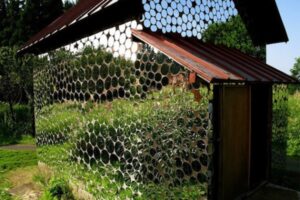
What could be better, you hijack a nice view and reflect it in front of a not so nice view. In order to achieve this, the mirror must be large enough to conceal what’s behind. Planting around the mirror will also help divert attention, especially if the planting moves as this further breaks up the visual lines of the offending object behind.
Living in a Noisy Environment
Ideas to help you make your garden a place you can escape to – even if the world around is a noisy one.
We would all love a peaceful tranquil place to sit outside in
But humans are rather a noisy bunch sadly and so you end up with a garden noise. So how do you notice the noise less, and feel more relaxed even if the world around you may not be? This issue is especially important in urban areas when gardens are smaller and usually surrounded by sometime noisy neighbours.
Tune out the garden noise
Fortunately, we have the ability to tune out sounds if we are distracted enough. But when you go outside to sit in the garden, if there are too few distractions in the garden, you simply notice the noises outside.
Humans are blessed with 5 senses, taste, touch, sight, sound and smell. Too much emphasis is placed on the visual elements.
The part of the garden you sit in the most needs filling with plants that will hold your attention. So plants that you can touch, taste, smell, look at and listen to. Fortunately, we have created some landscaping ideas, helping you tune out that garden noise.
Then when you do sit down you can let your senses filter out the background noises. Water features are lovely too, but gentle trickling water sounds can be a distraction of another kind. So choose wisely!
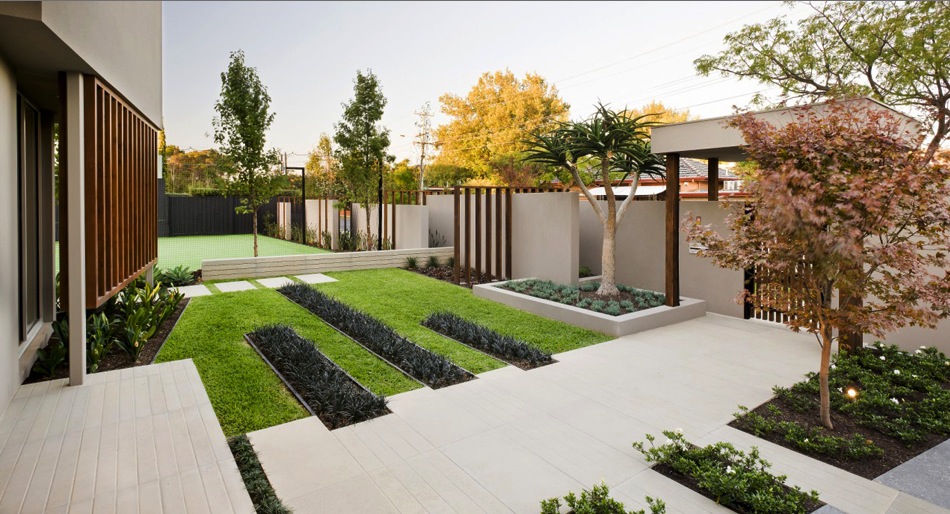
Although this garden looks lovely and a lot of money has been spent creating it. There is a danger that we sanitise the garden. If we treat the garden as an outdoor room, then the decision parameters are based on interior desion and not creating a garden.
You will always notice the noise IF there is nothing to distract you from it. This contemporary garden is visually impressive, but you can’t lose yourself wandering around looking at plants or watching the trees move or the bees buzz!
Unmuddling a Garden Space
What to do when the garden has become a mess or just doesn’t look very good
Muddled gardens – sadly creep up on the unsuspecting gardener, these are gardens that once followed a plan, but that over time have morphed and evolved into a bit of a muddled mess, full of overgrown plants or even worse dead ones!
This post accompanies the 2 podcast episode on Muddled Gardens.
There are two parts to consider, the design layout and the planting layout. For more help and advice watch our design videos
Design Layout go Back to Basics
Once designs and gardens begin to get cluttered and muddled, it can become harder to ‘see’ where to start. So the best course of action is to go back to the basics and consider the minimum the garden needs to do for you.
- A place to sit
- Having a way to get to the seating area
- And something to look at once you are there.
This simplifying allows you to think through what’s really needed. The seating area needs to be where you sit out most often, and a path (if necessary) should take you straight there easily.
In terms of the border placement, just concentrate on creating one impactful ‘look at me’ border rather than try to sort everything out all at once.
Gardens and gardening takes time, it always has. This method will give you the basics back, and then once those are done, you will sit out in your favourite place and can look around and begin to re-plan how the shapes in the garden should be reworked again. Muddled gardens need unravelling, but it is always best to unravel them slowly, just like a tangled ball of string, if you unwind too quickly it simple re-tangles itself elsewhere!
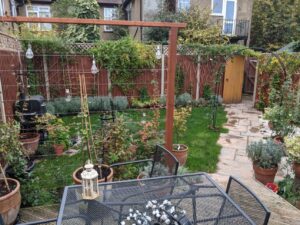
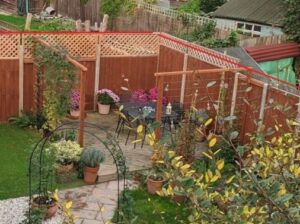
In this garden for example, it’s owner had already laid out the two main elements, the seating place and path to get there, but then they had got over excited with choosing plants for the garden, there were so many lovely plants to have – and they chose lots of them to fill the garden.
Unfortunately, this led to too much in the garden and it becoming rather muddled.
What was needed was a plant audit!
| Plant | How many | Space used | Colour | Nice??? |
| Lavenders | 5 | Football size | Dk blue | Very, smell great too |
| Ground hugging things | 5 | Pancake shaped | white | Ok, but they don’t do much |
| Grassy plants | 1 | Fountain shape | whitish | Love the way it moves |
| Green round plants with big leaves | 2 | Small car sized! | green | Green and boring and always need cutting back |
| More ground hugging plants | 6 | Small pancake | Multi coloured | Invisible till they flower, which don’t last long |
| Roses | 3 | Space hopper size | Red, yellow, apricot | Never ever look like the pictures in the book. spikey too |
| Big strappy leaves | 4 | Space hopper size | Dark red/purple | Lovely shape, and needs no pruning |
It’s easier to decide which plants to keep from a list as the reason you like them is there in black and white. Get rid of the underperforming plants (or gift them to friends), which then reduces the number of different types of plants you have.
Then decide on a colour theme. Green plus up to 3 main colours.
The idea is to visually declutter the garden. Limiting the range of plants means you can repeat plants around the garden. This always ties a garden together and un-muddles it. Restricting the colour pallette allows you to enjoy the colours that are there without being swamped.
